After six fun and relaxing days in the nation’s capital, it’s time to head north to the island of Penang, where we’ll spend an additional two weeks to round out the rest of our time in Malaysia.
Kuala Lumpur to George Town
Despite Penang being located some 200 miles northwest of KL, getting to the island couldn’t be much easier.
We’ll first take a Grab car (Southeast Asia’s Uber) from where we’ve been staying in Bukit Bintang a couple of miles down the road to Kuala Lumpur’s efficient rail hub, KL Sentral.
Next, it’s just over a four-hour journey by rail on the KTM ETS high-speed train to Butterworth.
Finally, from Butterworth station, we’ll make the short walk over to Penang Sentral where we’ll grab one of the ferries across the channel to Georgetown/Penang passenger ferry terminal. Ferries depart about every 30 minutes and the crossing takes 20 minutes.
Our Airbnb is only a few blocks from the ferry terminal.
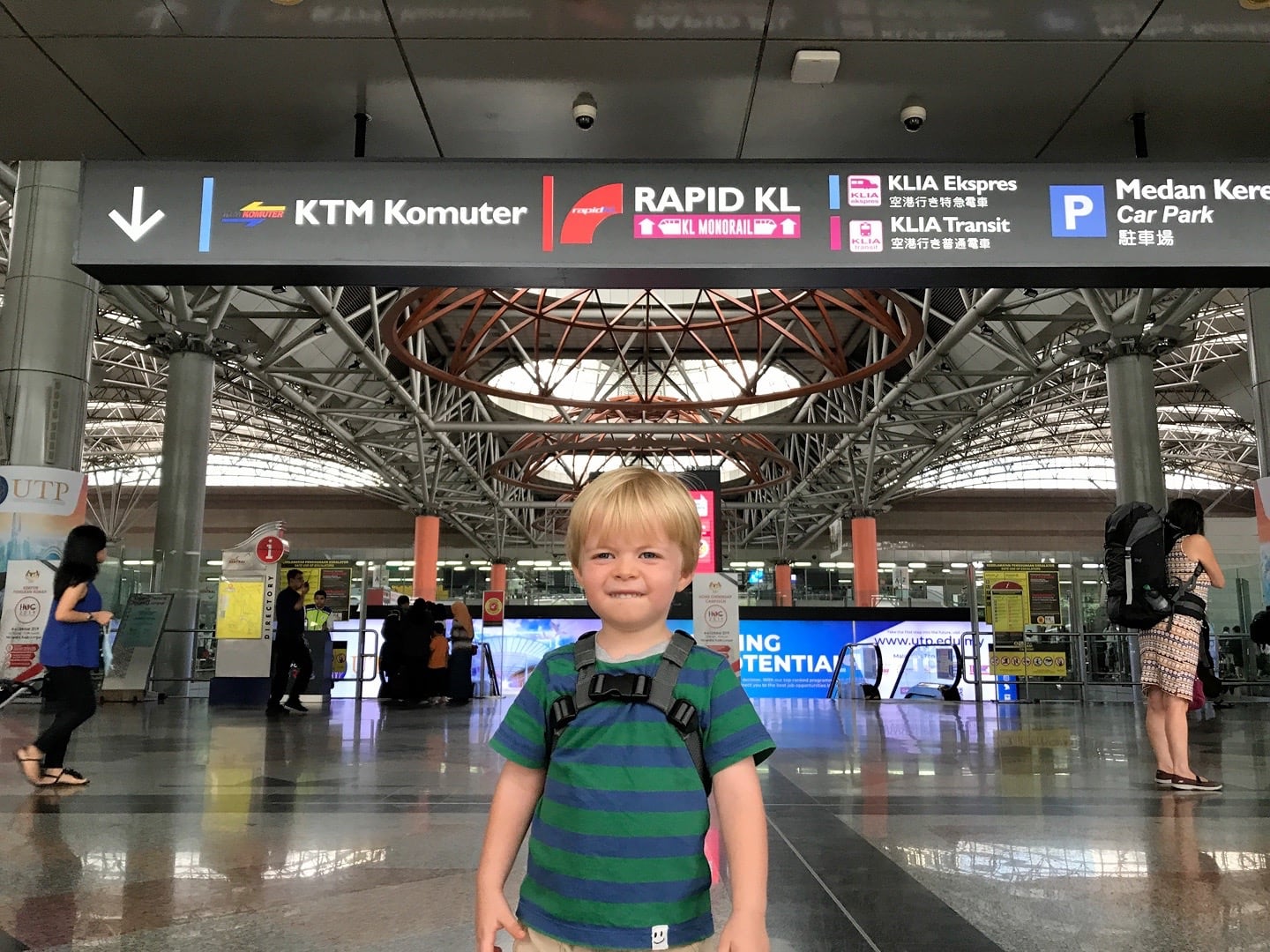
At KL Sentral, excited for the big day on a choo-choo!
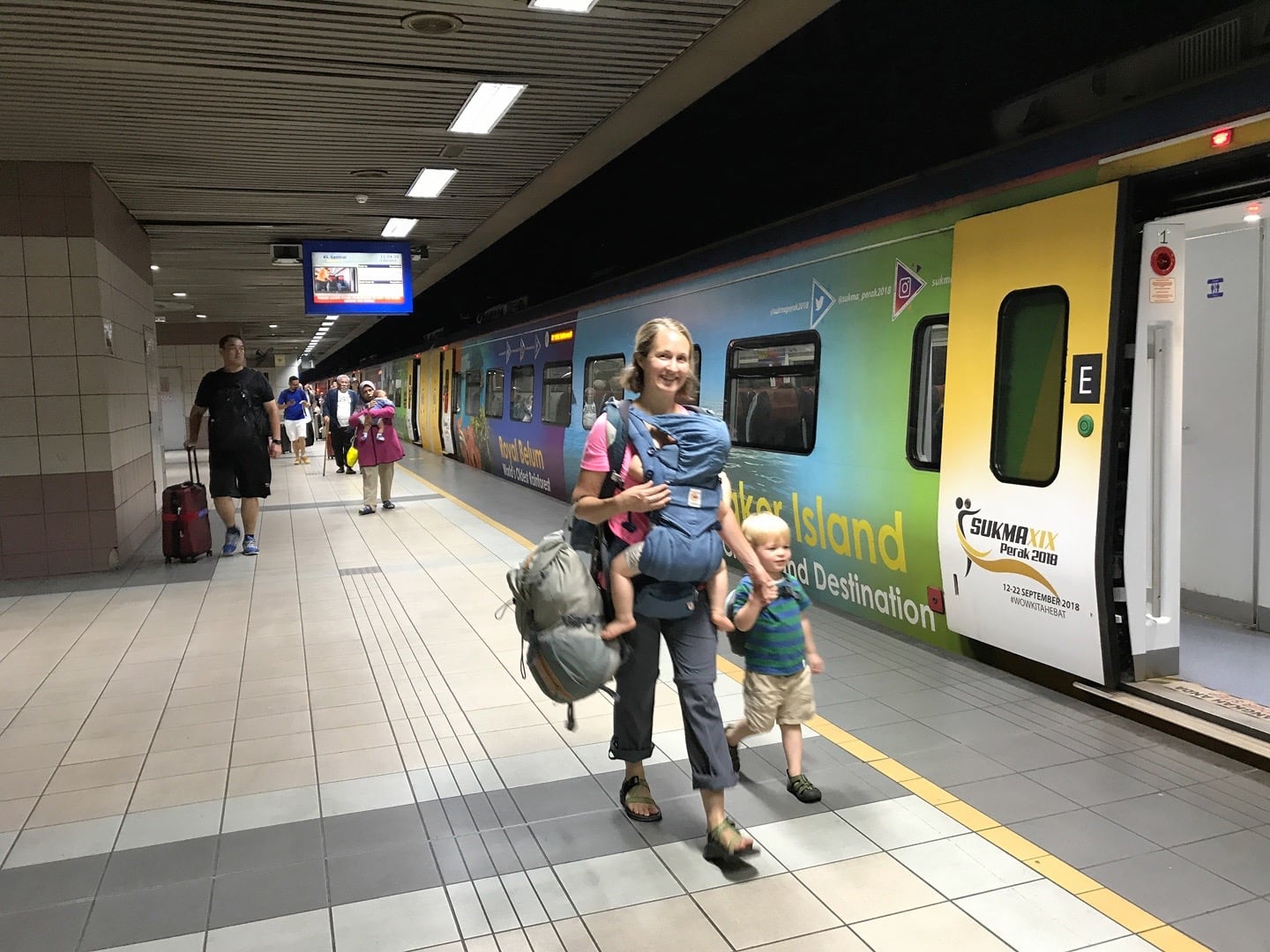

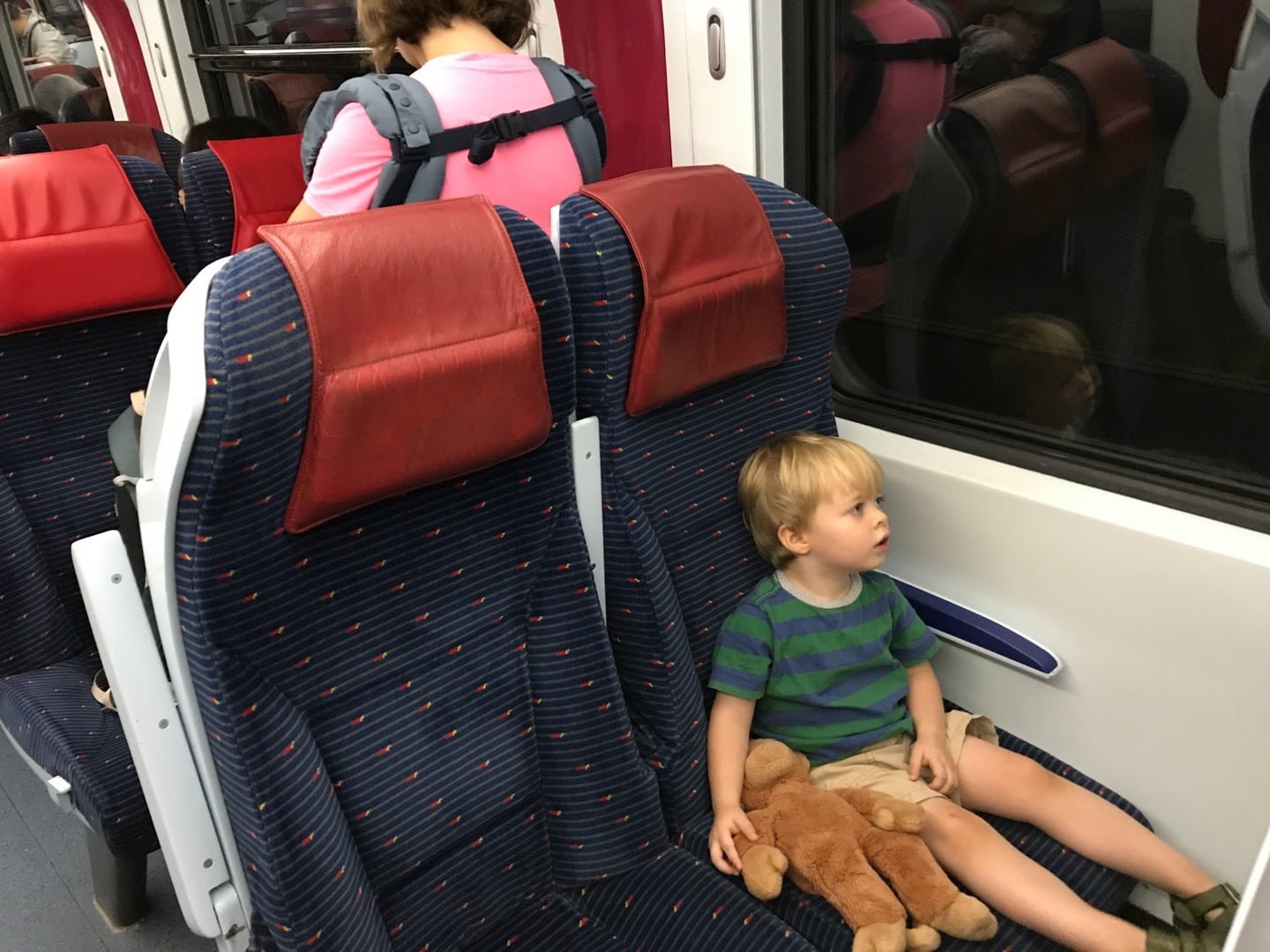
This time, we had assigned seats, so we didn’t have to rush on to make sure we were all together. However, we did opt to board as soon as the gates opened to ensure our luggage for the next two weeks got a nice little space on the luggage rack.
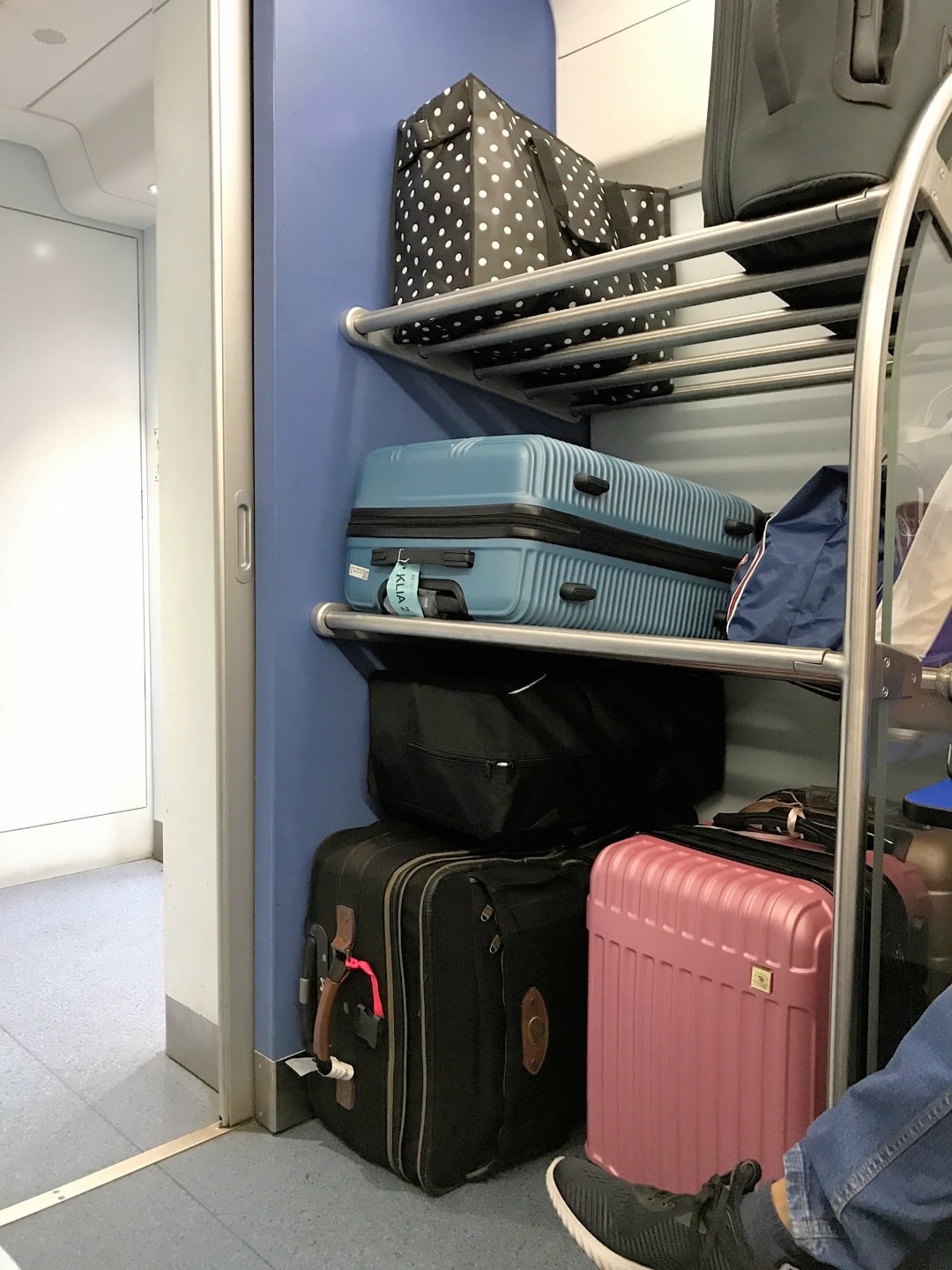
One large suitcase and our awesome portable crib (plus a couple of backpacks). I guess that’s the [one] upside to AirAsia’s ridiculously stingy baggage restrictions.
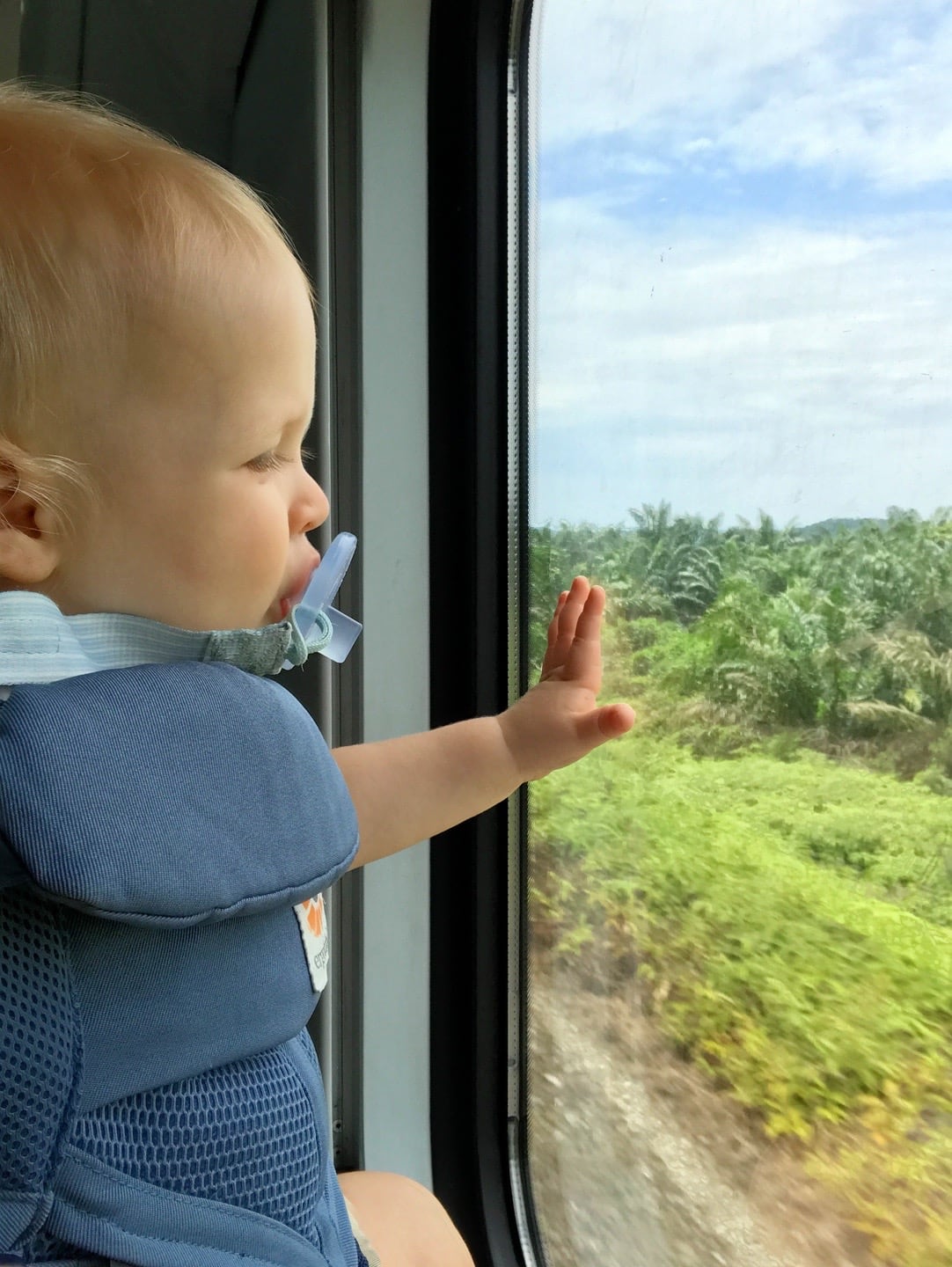
The train left KL at 11:15am and was due into Butterworth at 3:30pm. Perfect, we thought. The boys would get to spend the first hour eating lunch and soaking in the train experience, then nap for the remainder of the time. Unlike a lot of tots, these weirdos really like their naps.

Well, that was the hope, at least. Riley got a couple of cat naps on mommy and daddy, but Noe just couldn’t make it happen. It seems the experience was just too exciting to be wasted on a nap, I guess. He gave it a valiant effort, but in the end, the Sandman never came. We knew we’d be dealing with a live grenade for the rest of the evening, but it is what it is.
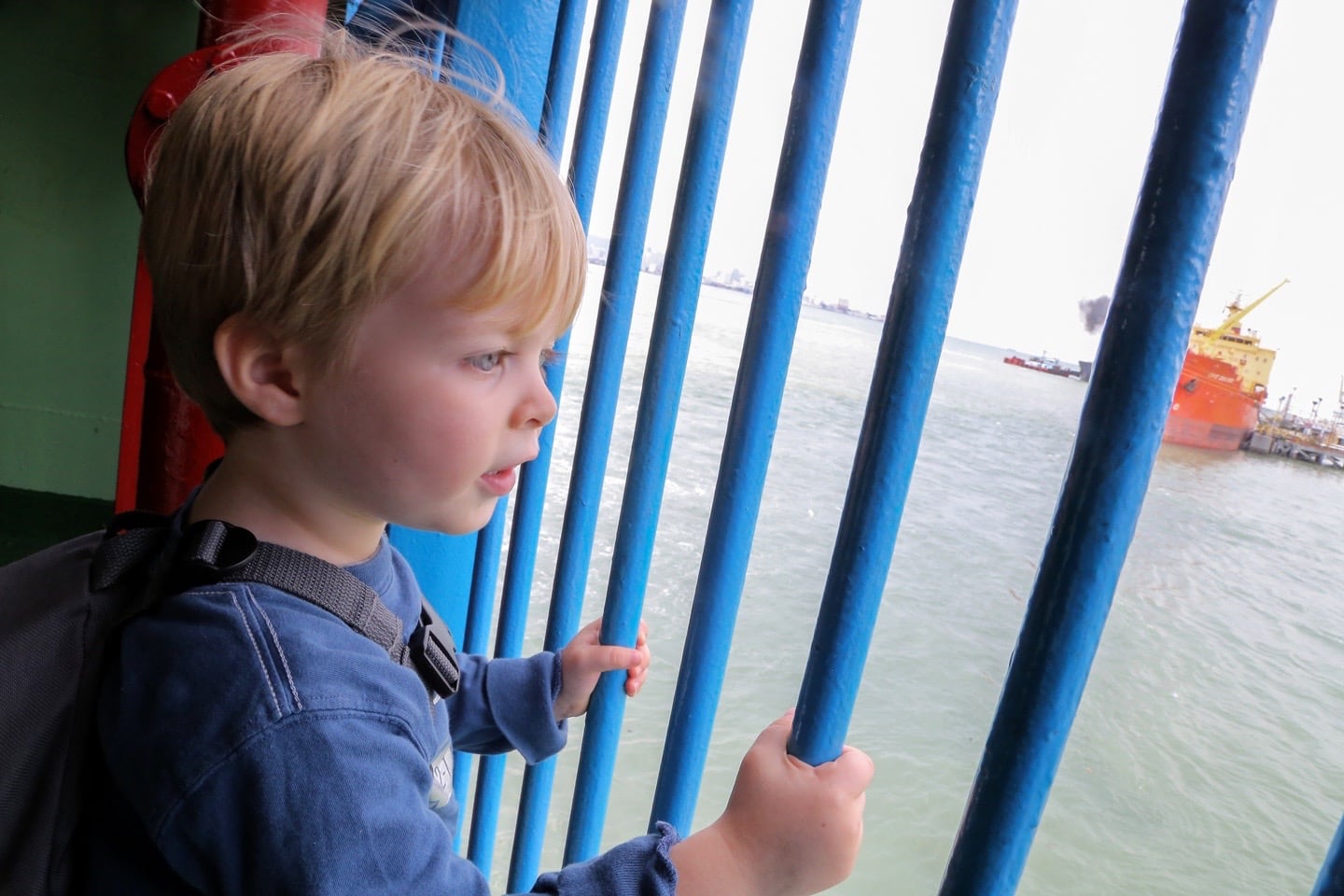
Noe loved his choo choo experience, but I think he liked the ferry ride to the island even more. This kid likes planes and trains, but he LOVES boats.
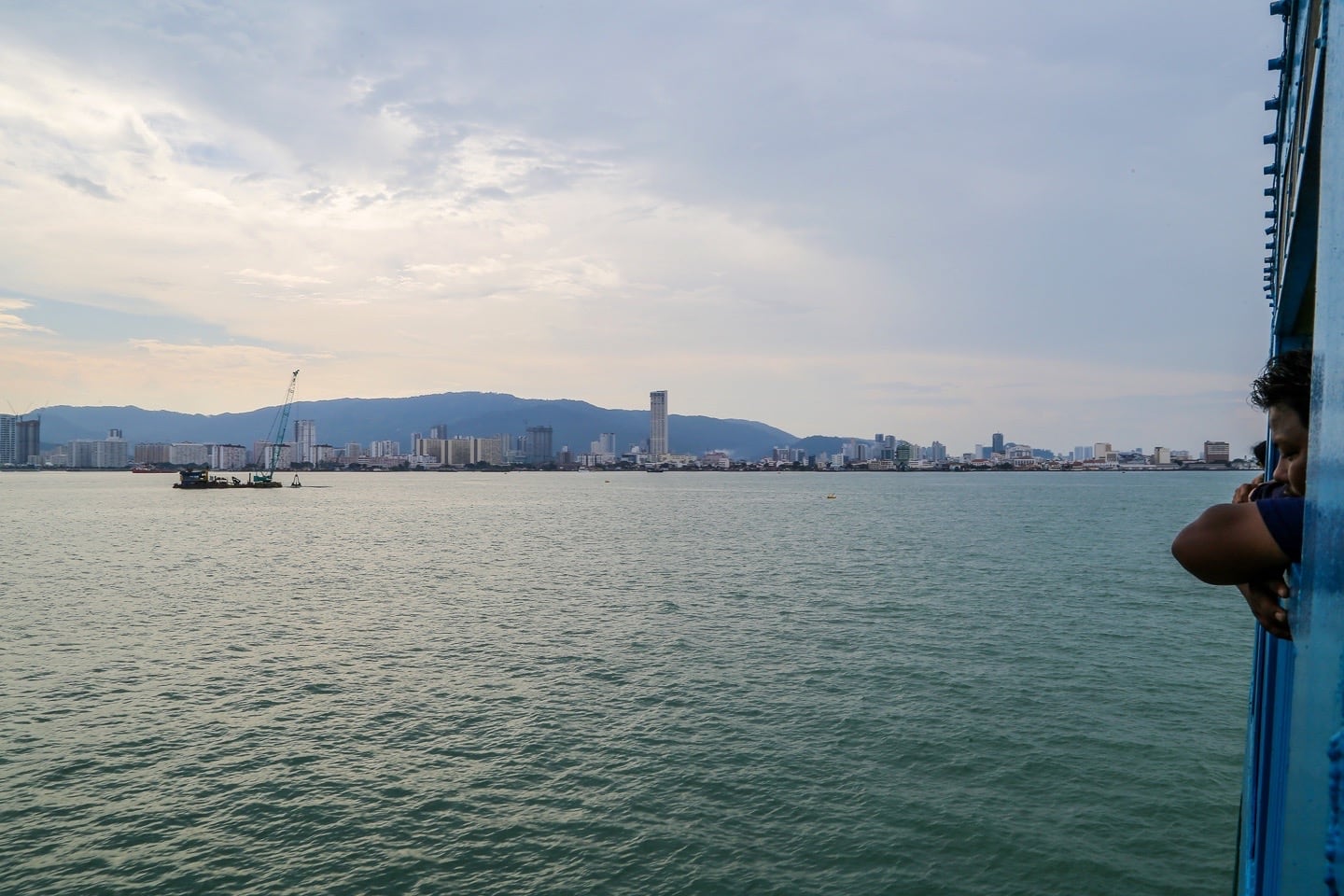
Our first glimpse of the George Town skyline, just after departing Butterworth on the mainland.
You’d never know strolling the bucolic lanes of the historic town center, but George Town is a thriving metropolis of just over 700,000, making it the second largest city in Malaysia, after the capital, Kuala Lumpur. And, Greater Penang has a population of 2.5 million.
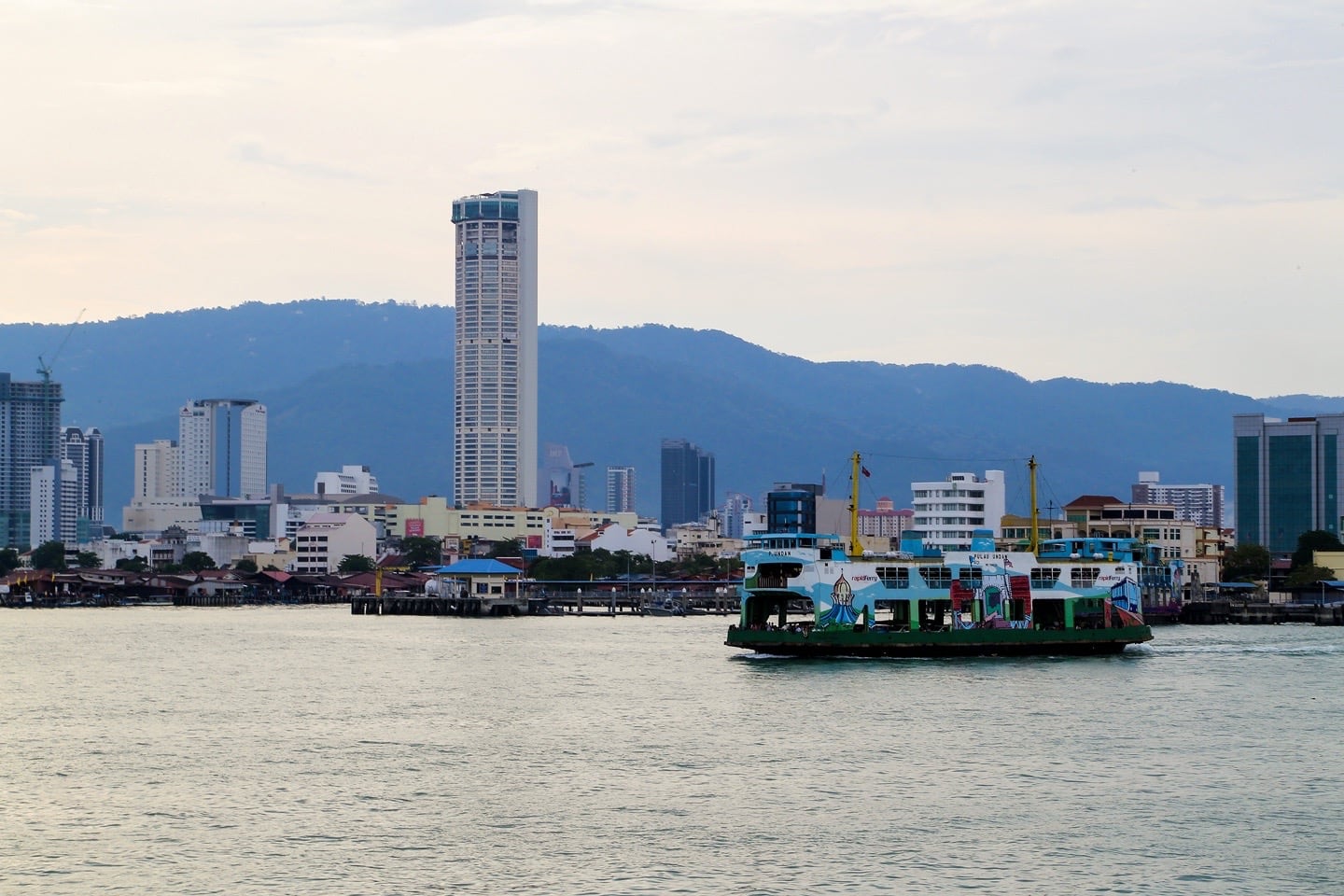
The island of Penang was inhabited long before the arrival of Europeans, but George Town itself was established in 1786 by the British East India Company.
George Town was the first British settlement in Southeast Asia and quickly became a center of spice production in the 19th century.
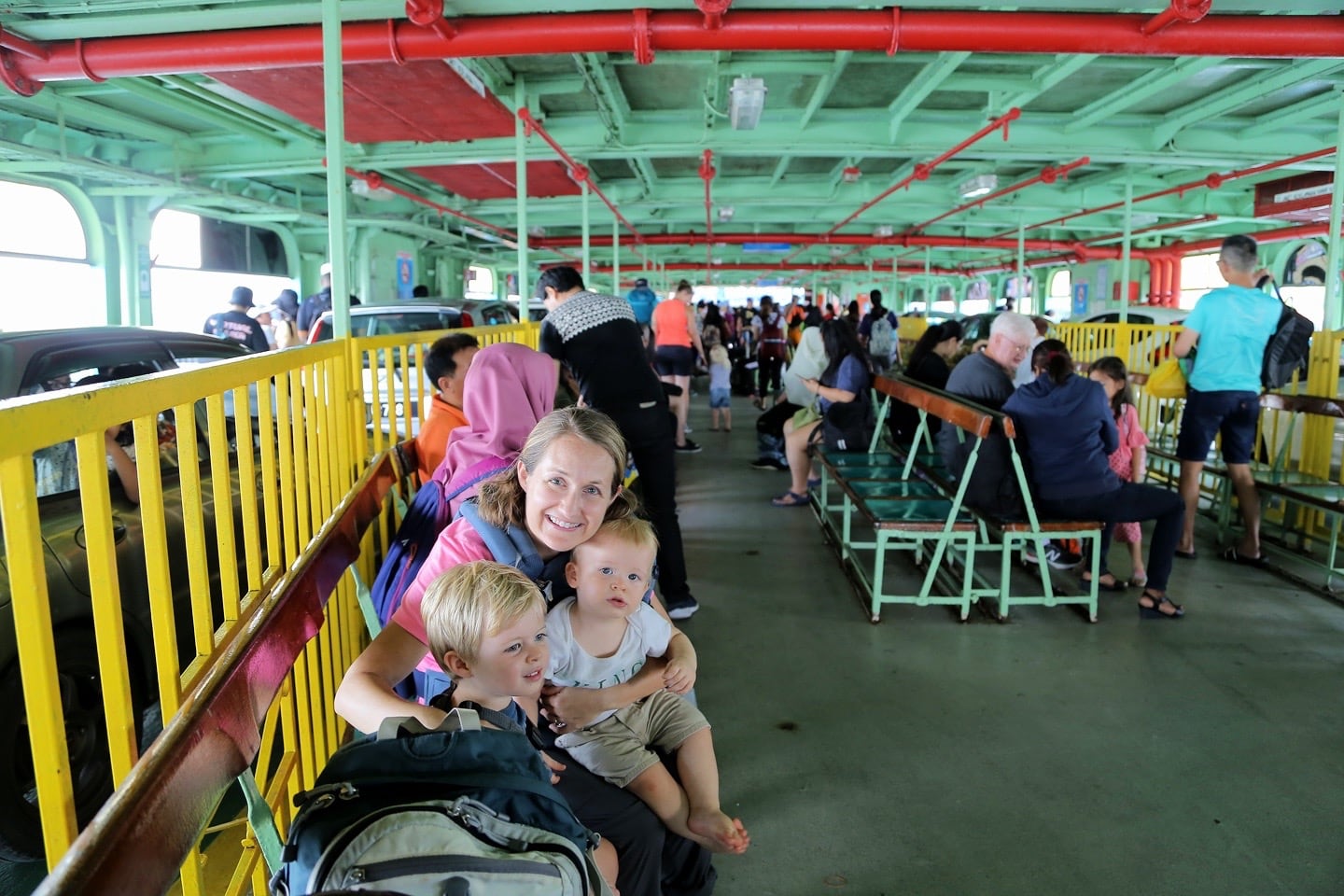
Here in early October, we’ve been getting daily thunderstorms and downpours in the afternoon. Fortunately for us today, the afternoon thunderstorm decided to hold off a bit…until just before we were heading out for dinner.
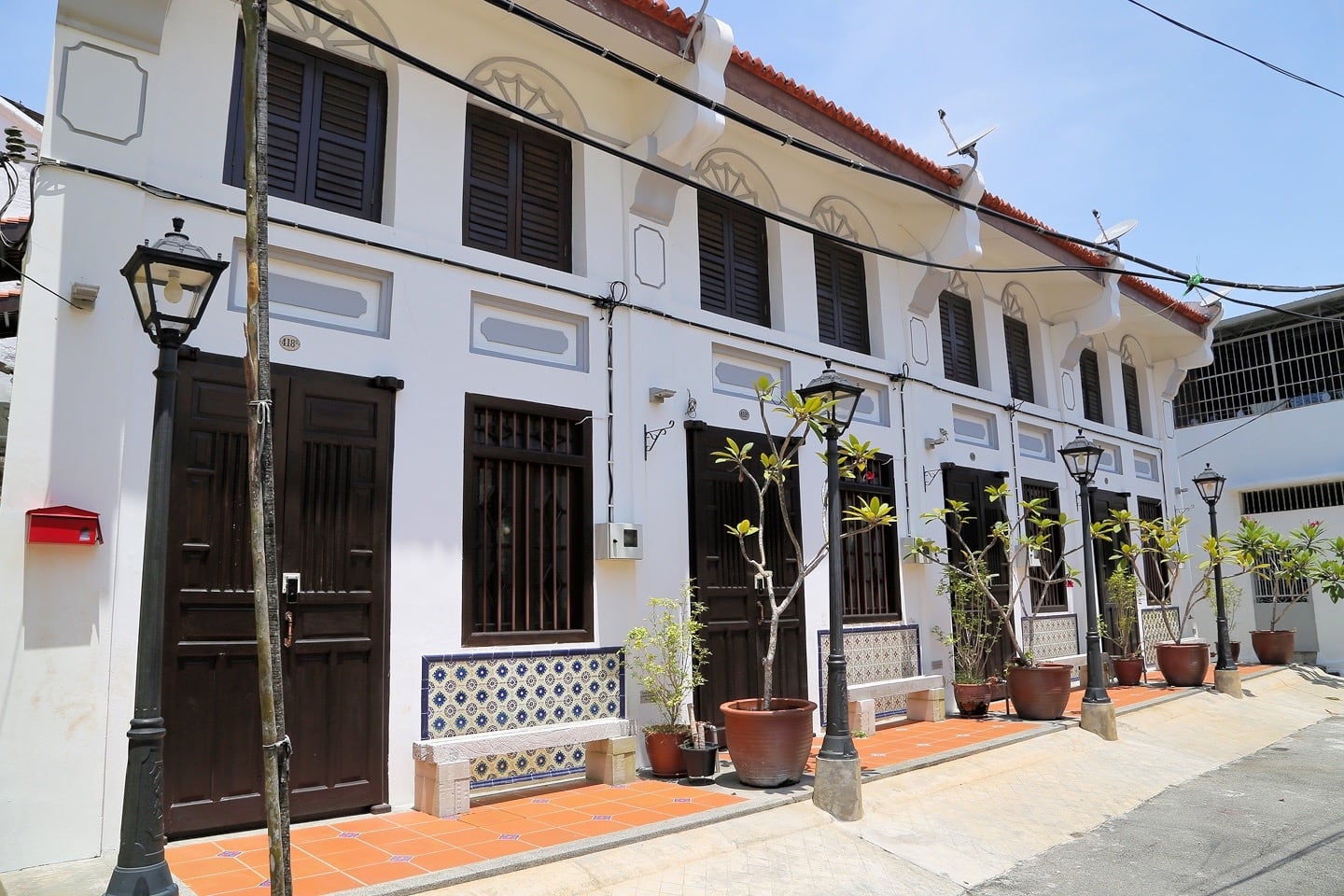
George Town Lodging: Airbnb #4 UNESCO Heritage
Another Airbnb. Spoiler Alert: We’ve booked Airbnbs for each of the three destinations we’ll be spending time in this trip. Our home for the week is the first row house on the left.
Our George Town Airbnb is a completely renovated 19th century colonial row house, which are few and far between in the UNESCO quarter. The vast majority of historic homes here are Chinese shophouses and clan houses which also exude a ton of local charm, but are far more common.
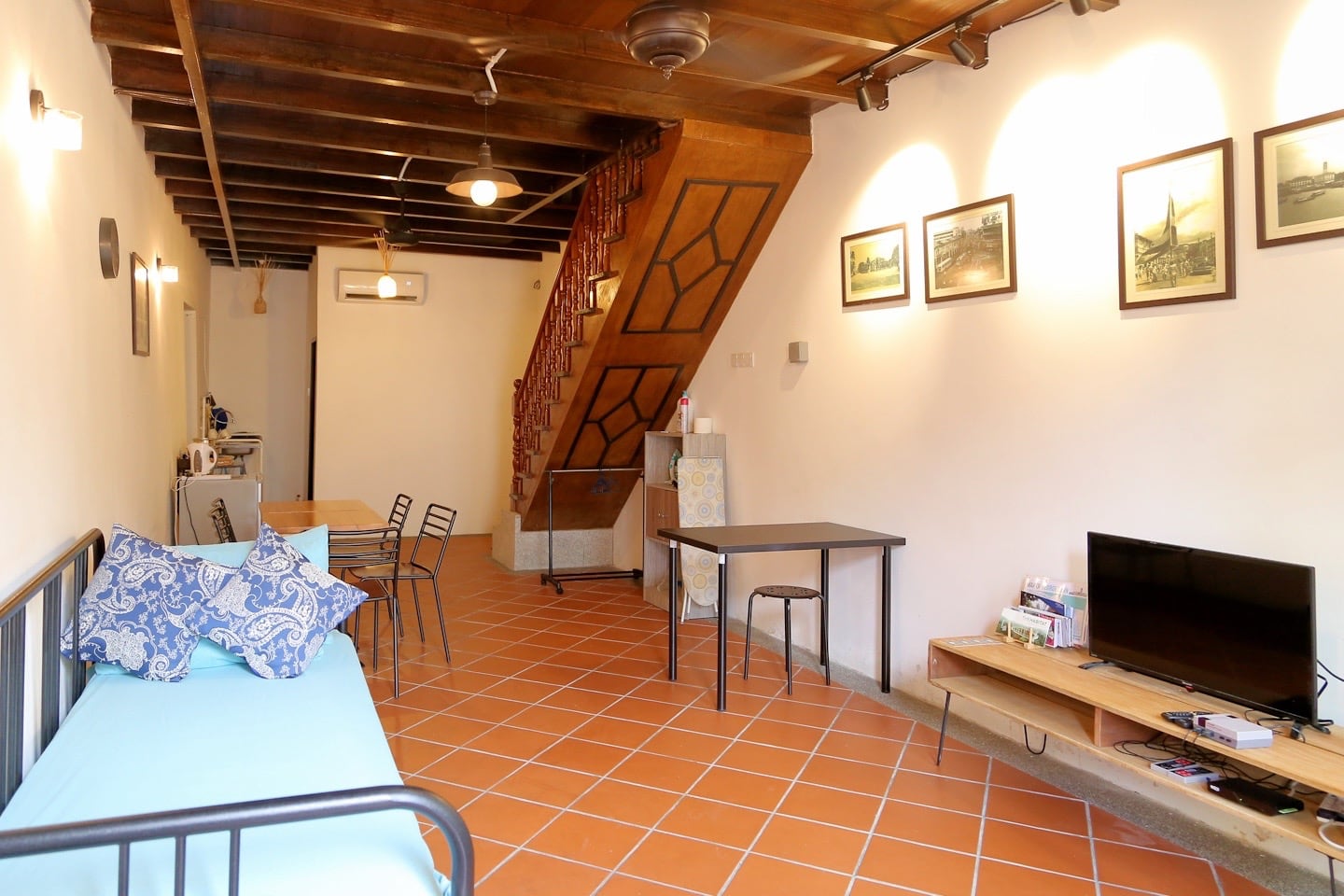
Staying in a period row house in the UNESCO quarter has pros and cons.
These homes are generally pretty small and often lack amenities such as a proper kitchen or upstairs toilet, even after renovation (though there is a sink, mini fridge, and hot plate).
For us, not having those amenities isn’t a deal breaker, as we plan to take full advantage of Penang’s renowned cuisine and can get by making midnight trips downstairs to the toilet for a week.
The upside is that we get to stay in a little slice of history in a UNESCO town for a week that is clean, updated, and centrally located. Oh, and did I mention the front room comes equipped with a mini Nintendo pre-loaded with every Nintendo game imaginable? That basically sealed the deal right there, at least in my mind.
And the price? This 2-bedroom row house set us back US$50/night.
The only real disadvantage to the home was its proximity to a social club where old folks get together to do karaoke every night until around 11pm. Fortunately, our boys’ sound machines helped drown out the old folks racket, and they were mostly soft-listening Chinese standards. Would we want to live next to that? Heck no. But for six nights, it wasn’t too much of an issue and in some ways added to the experience.
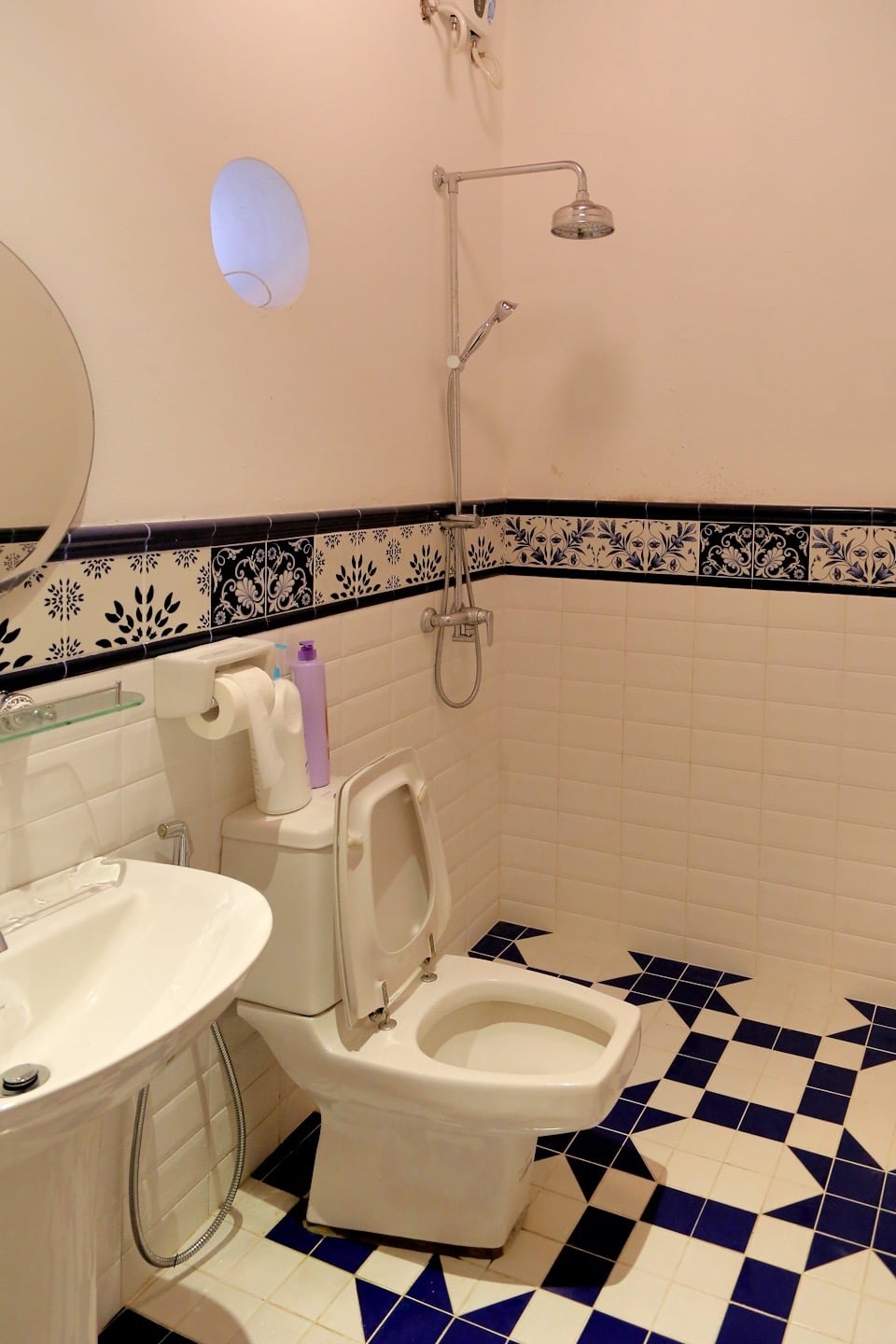
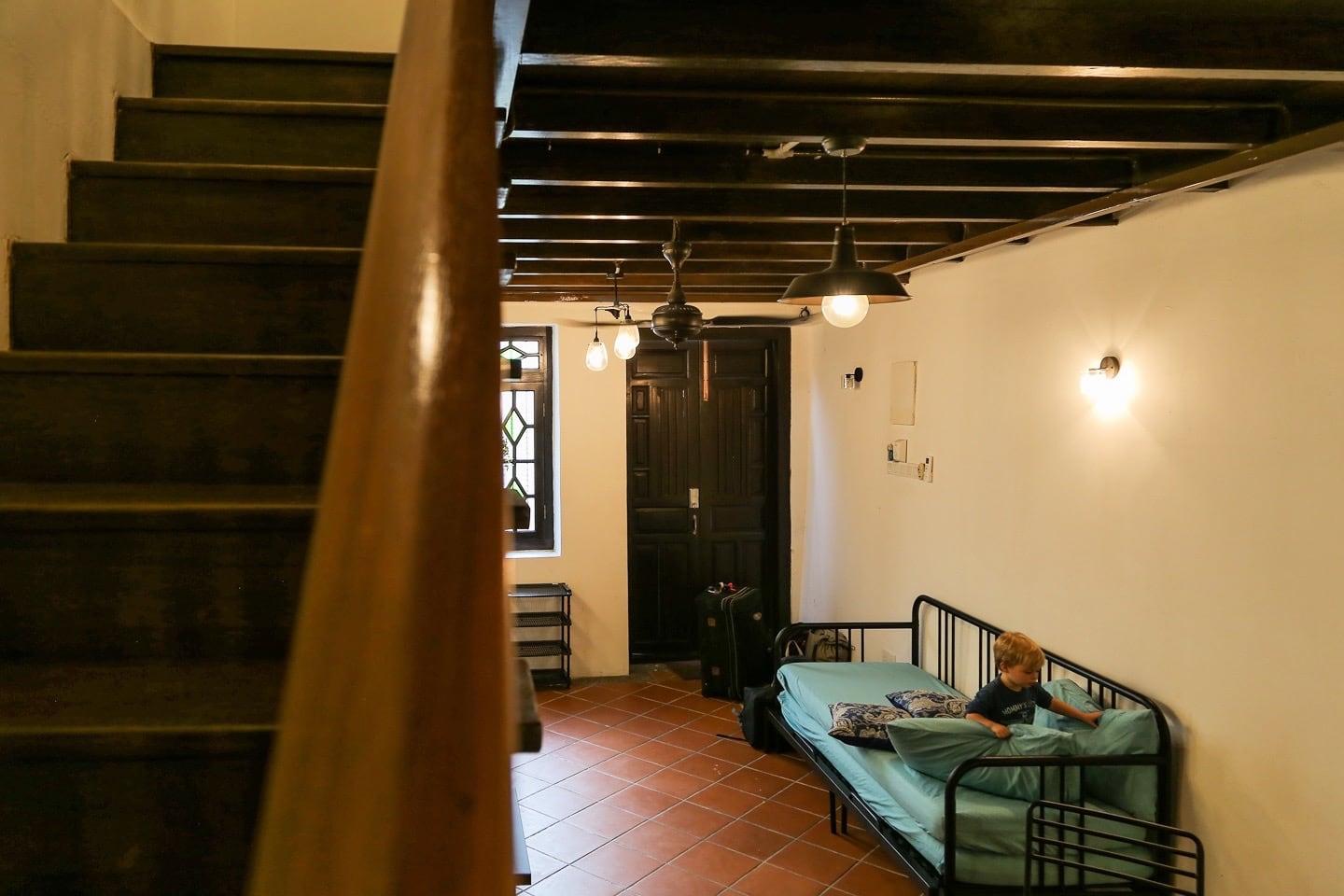
On the ground floor, there’s a series of framed photos documenting the complete restoration of the home, which was an incredible undertaking. Prior to restoration, the entire building was a derelict and crumbling shell with no roof. Some of the units had been added on to over the years covering the historic facade.
The entire building was gutted, non-original additions removed, then carefully restored with using local materials and period construction techniques by local craftsmen. Obviously, some exceptions are permitted, such as plumbing, electricity, aircon, ceiling fans, etc.
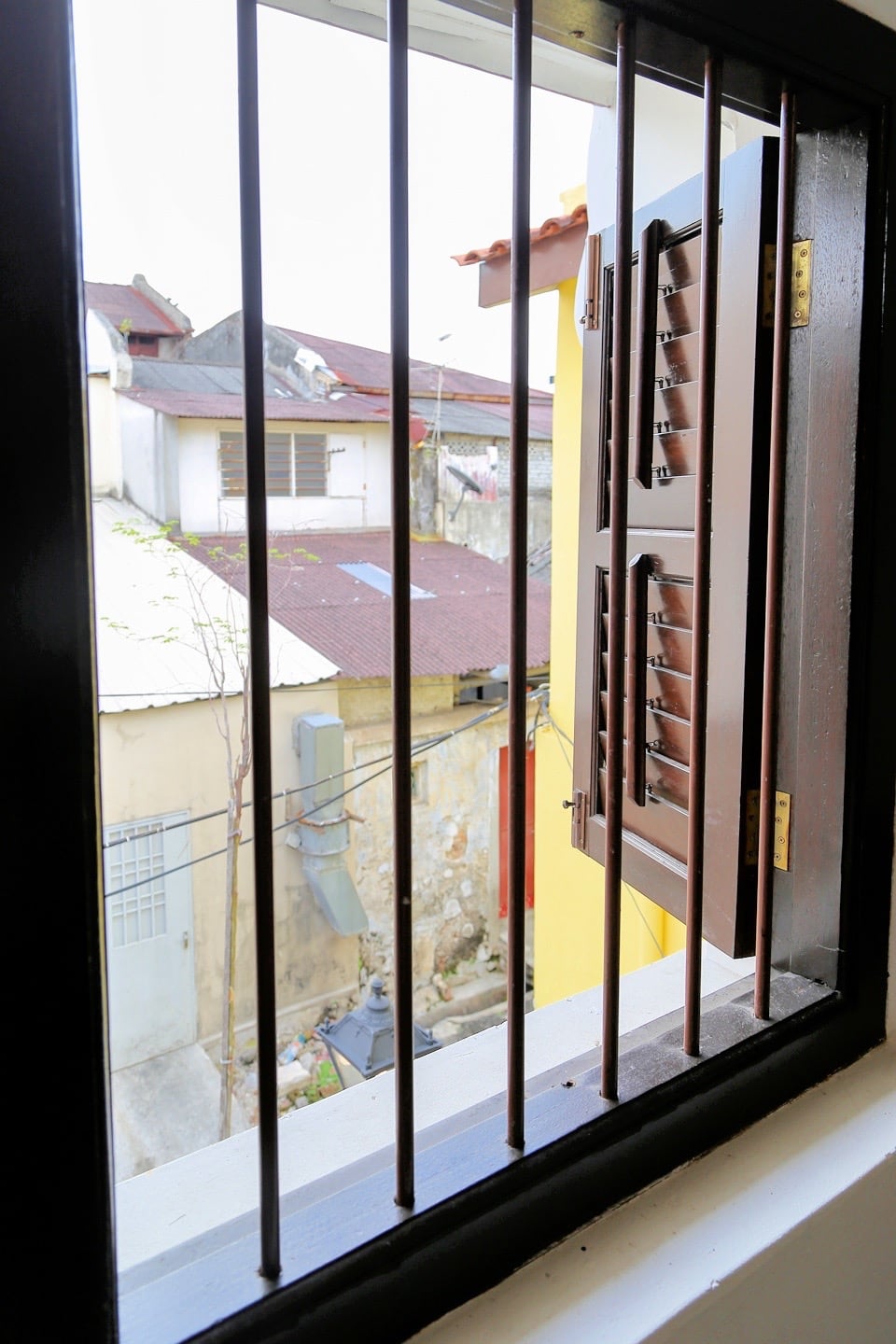
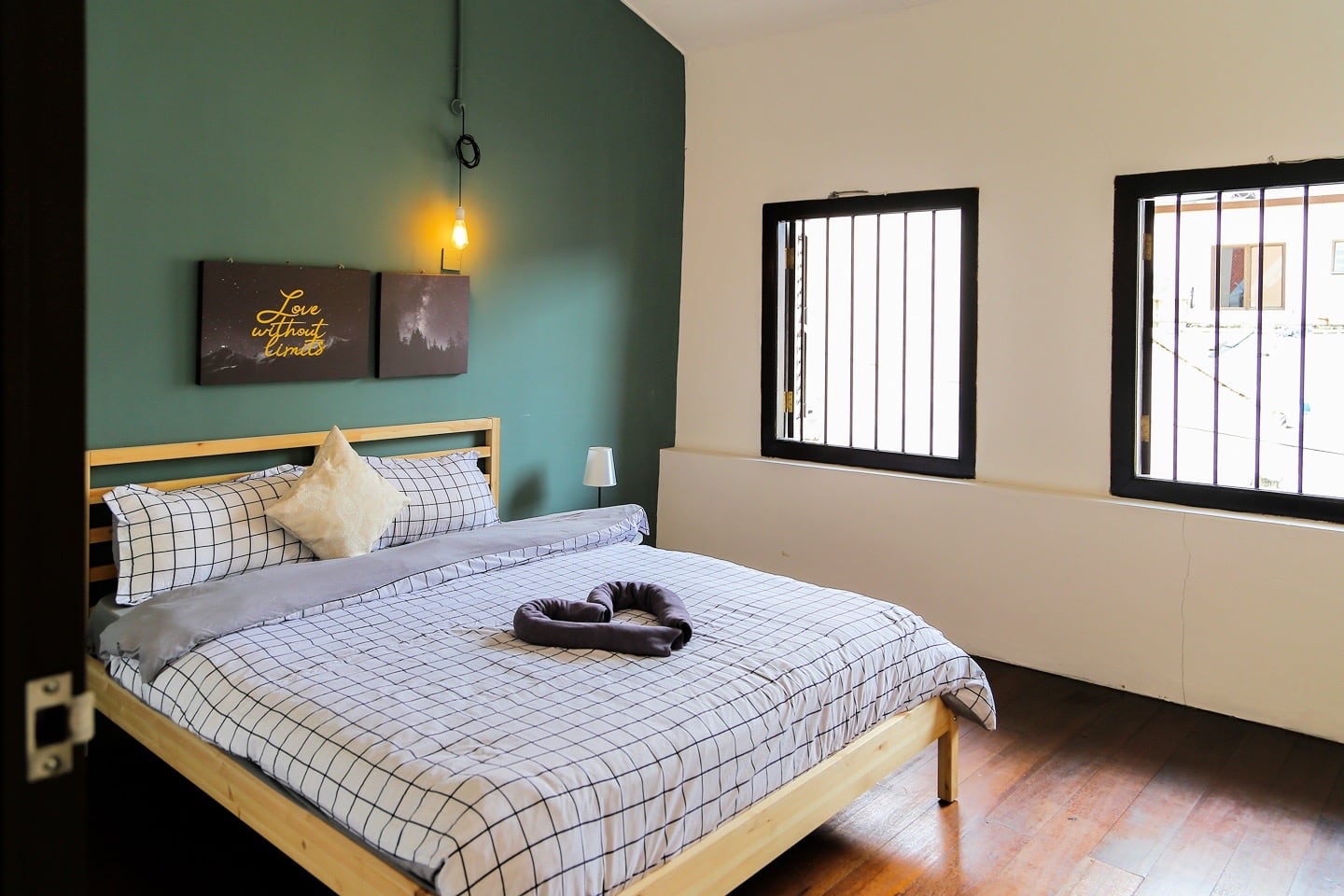
In the place we stayed in KL, Noe got his own room and Riley slept in our room in his crib. This time around, Lori and Riley will be in the green room and Noe and daddy will share the blue room.
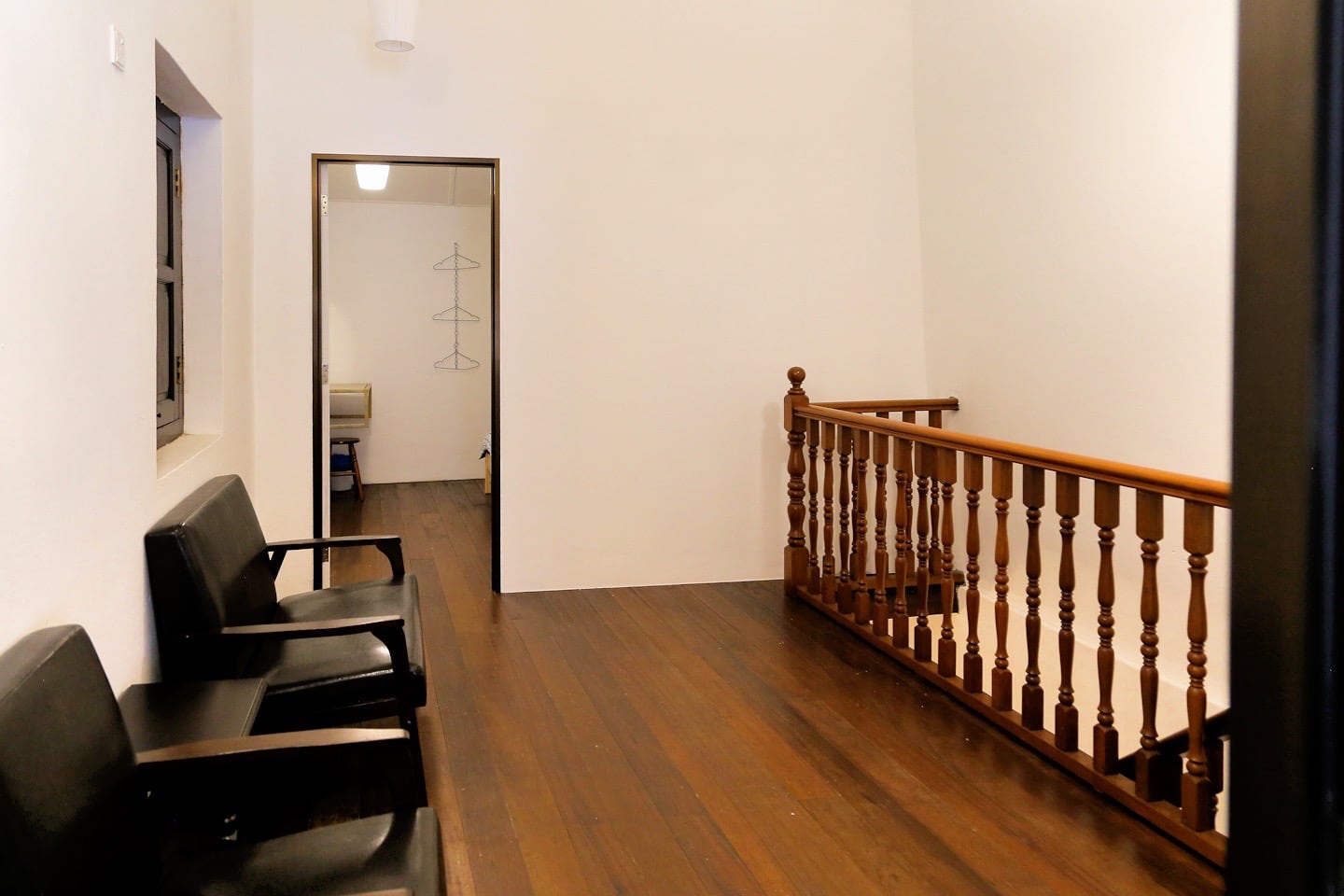
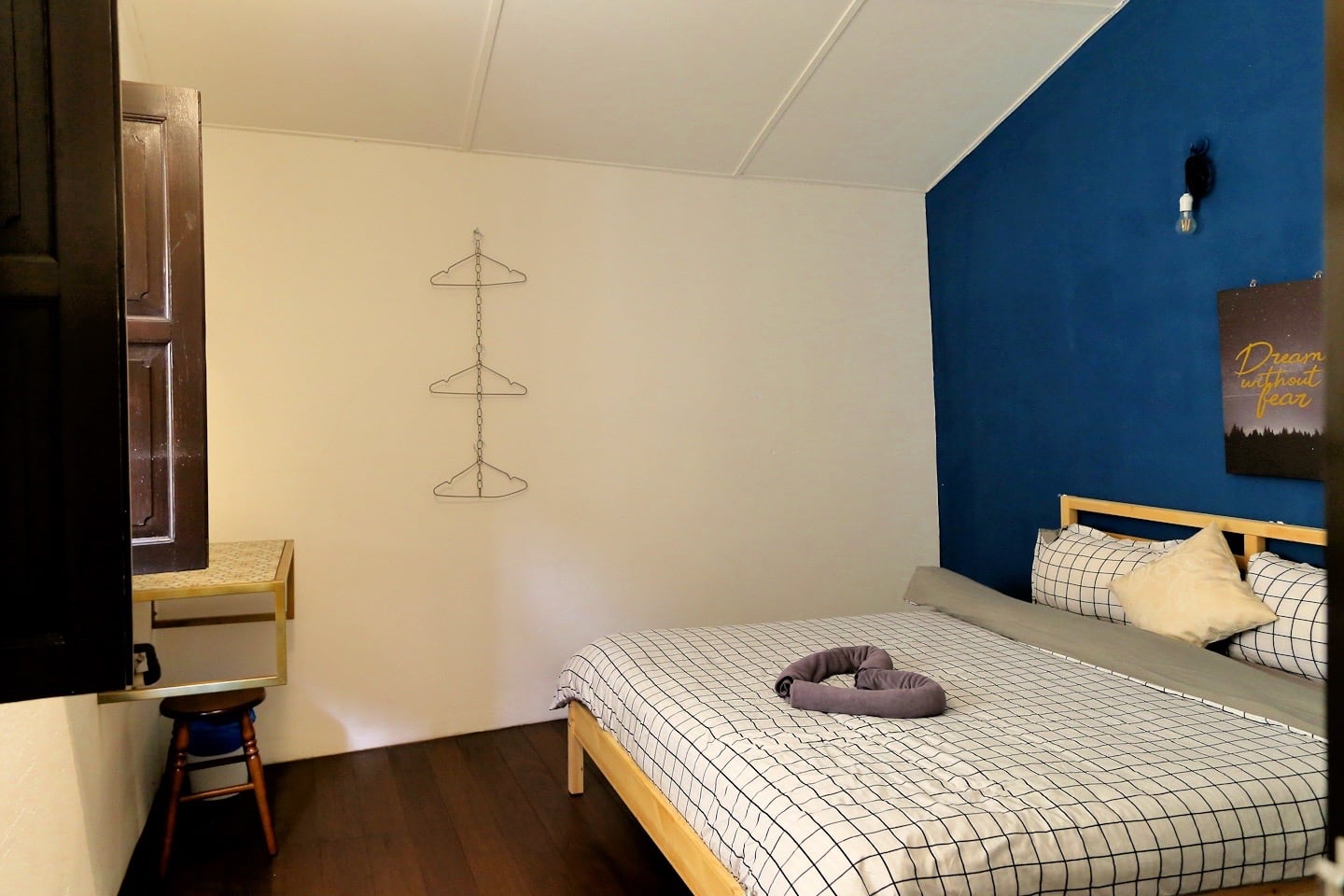
After the storm passed, we headed out for a walk and a bite to eat.
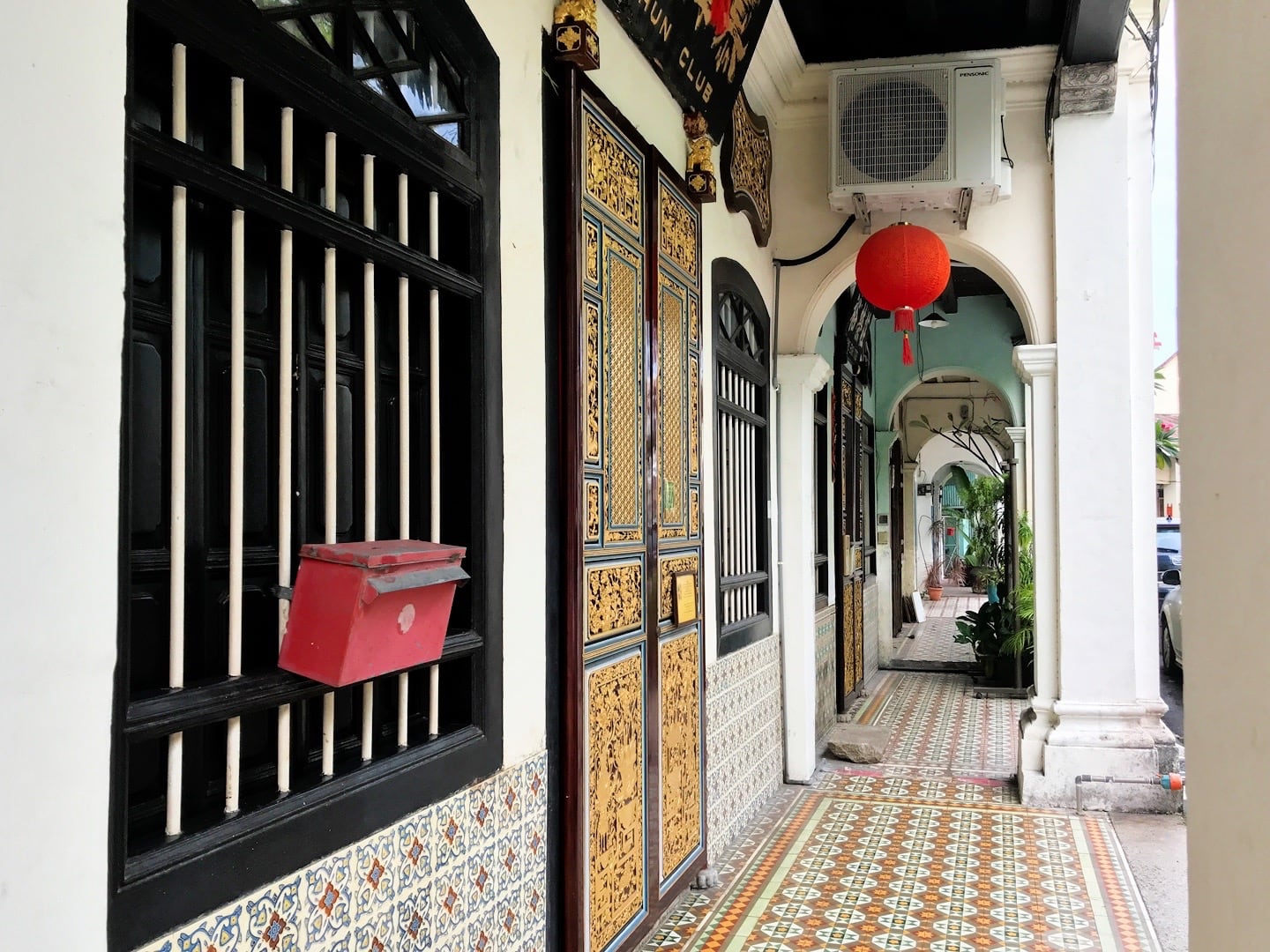
The primary ethnic group here on Penang island has long been Chinese, and Chinese writing, temples, and decorative touches can be found throughout town.
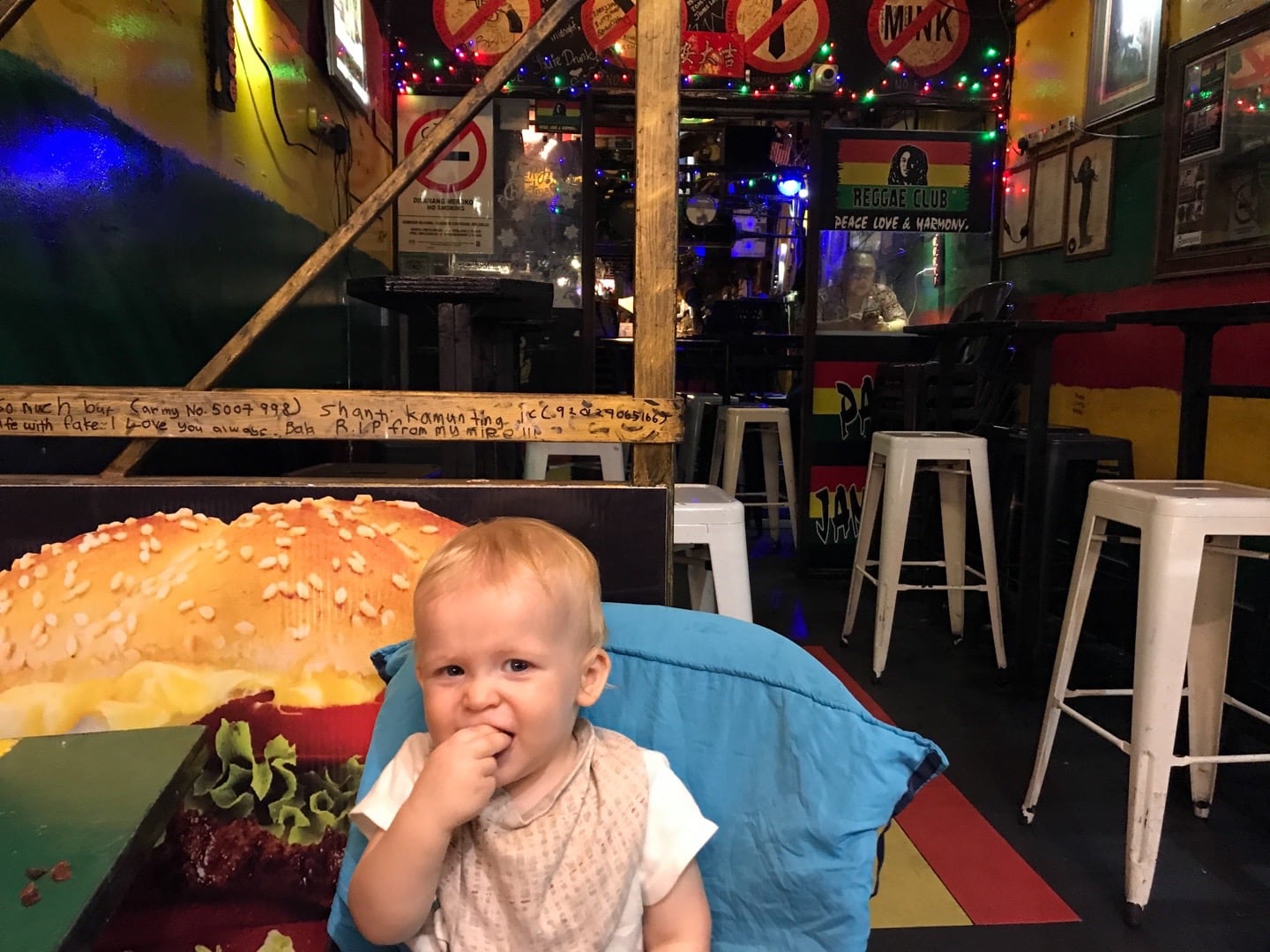
On our first night, we just needed a quick bite to eat. Reggae Club on Chulia street (find on map) fit the bill. Quick and tasty Middle Eastern food (their falafel was awesome). And, best of all, they had a resident dog who was eager to clean up all of Riley’s scraps when we left so we didn’t have to bother.
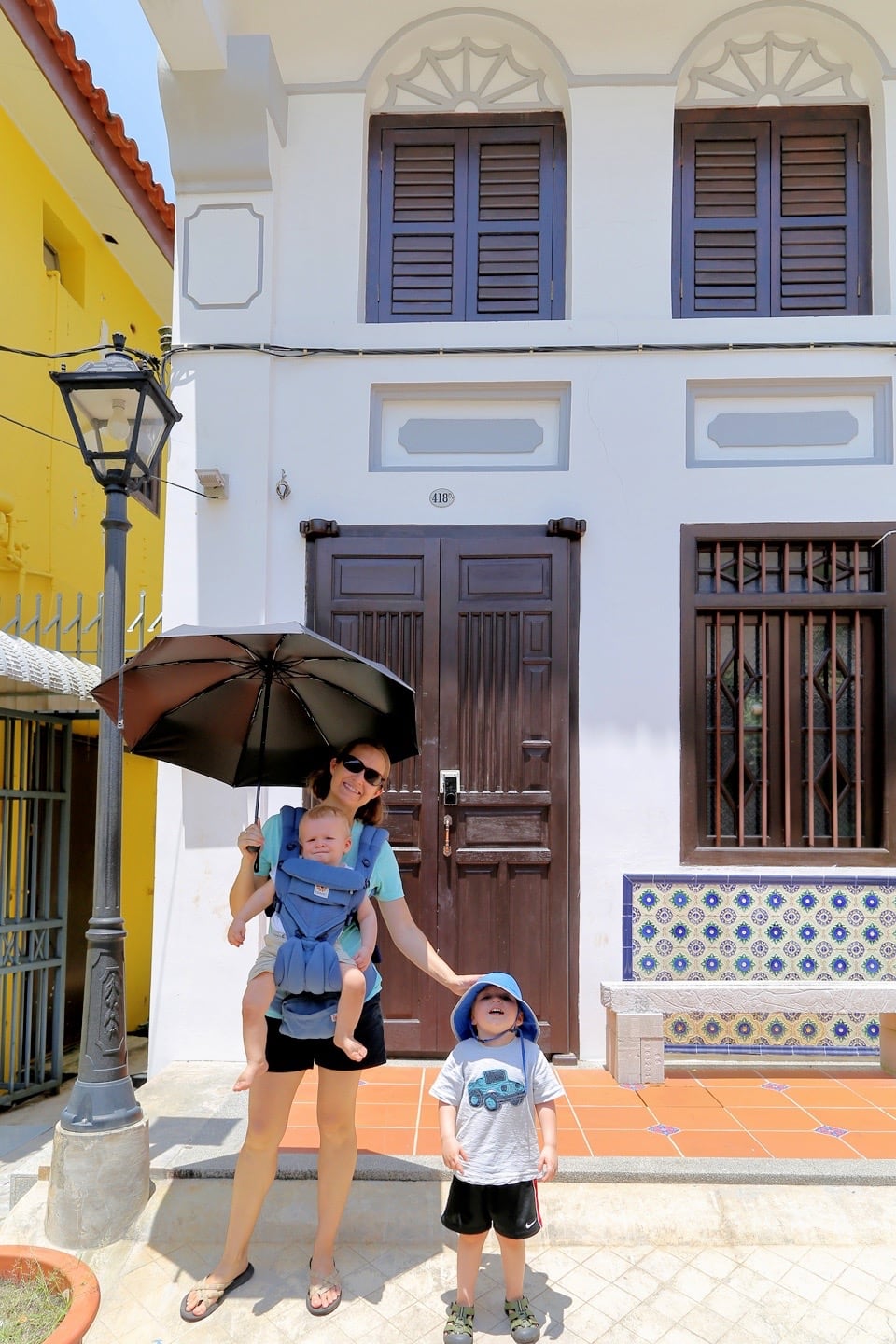
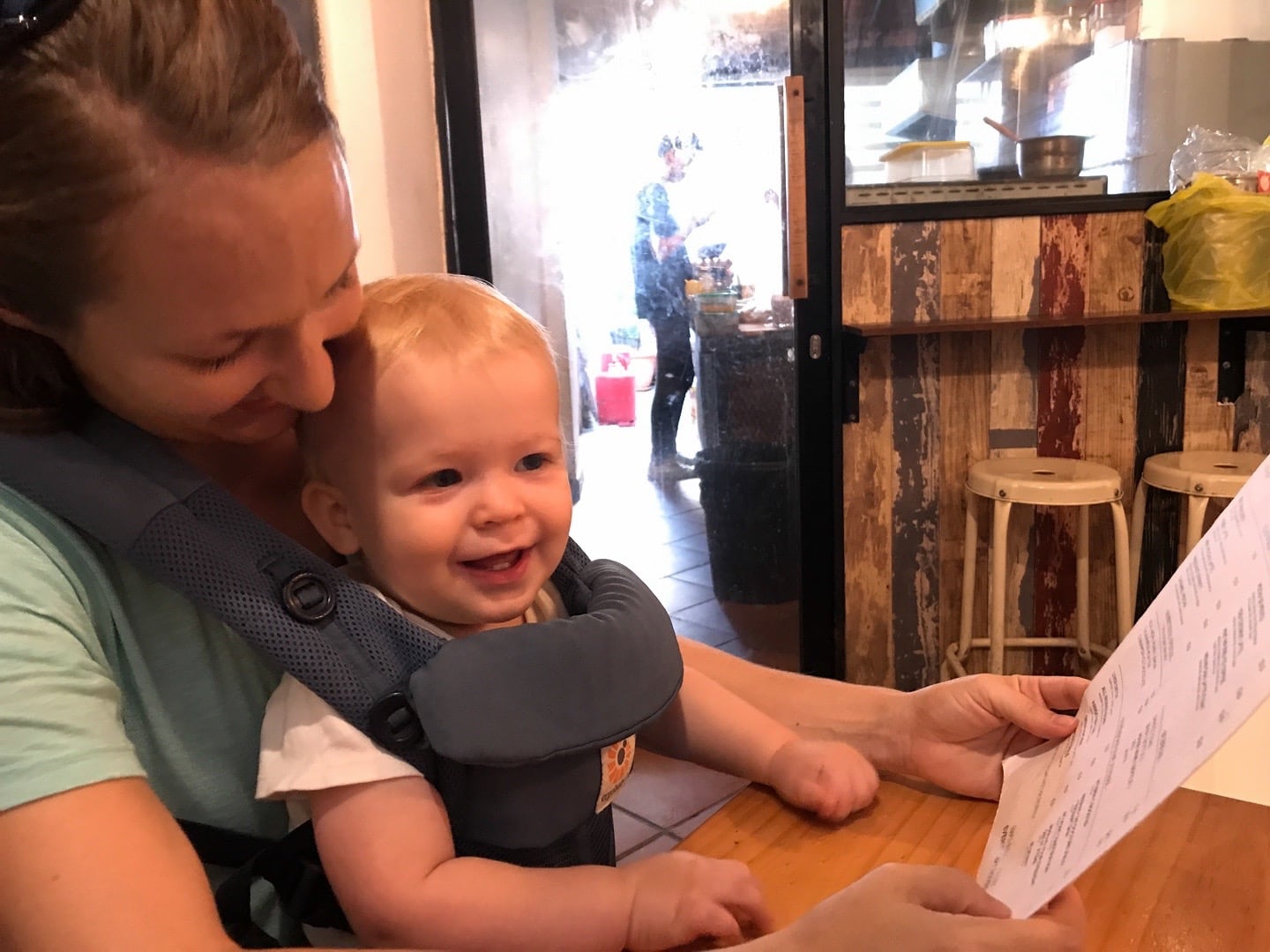
The next morning we hit the ground running, with delicious breakfast at Urban Daybreak (map), then…
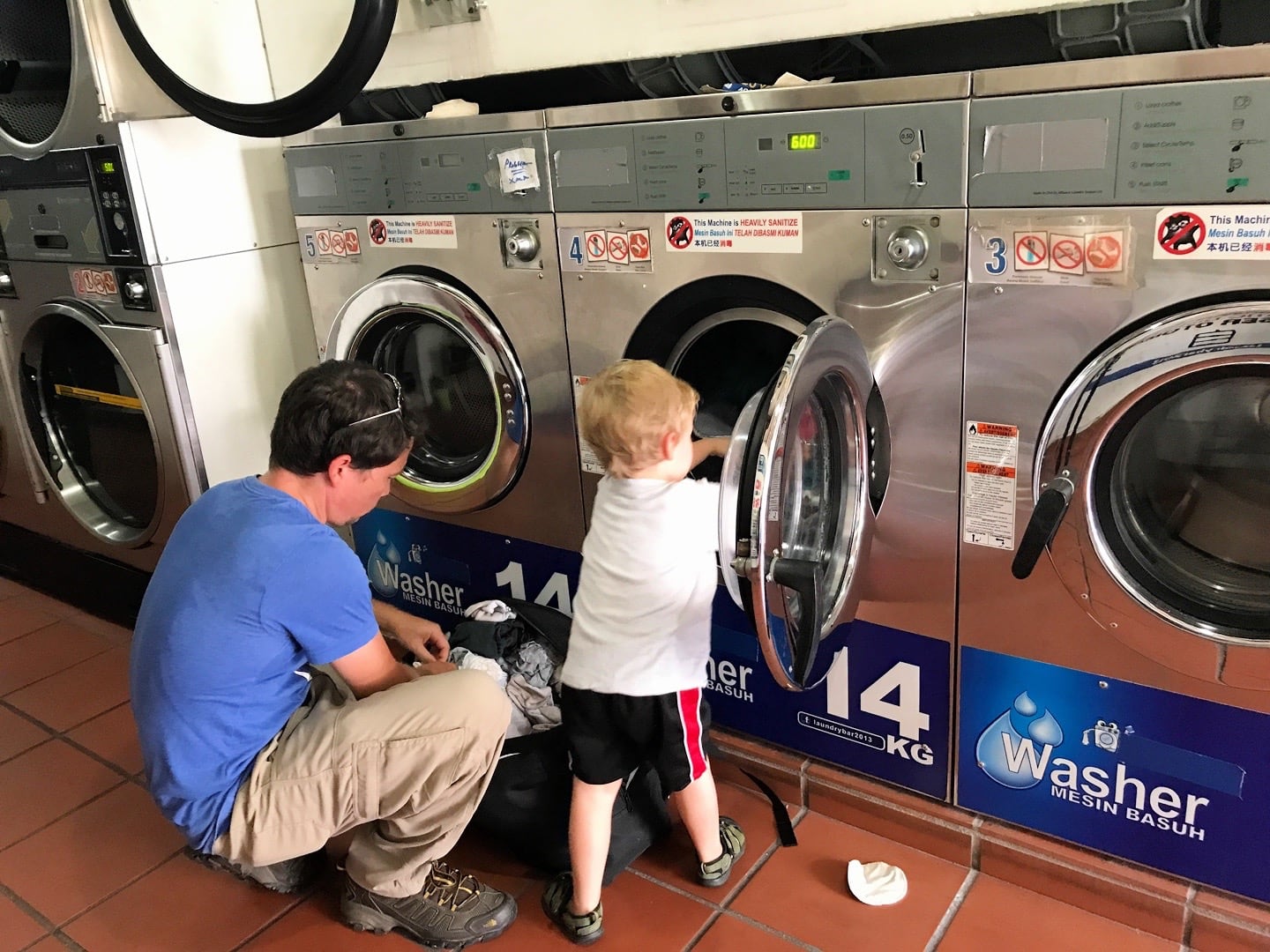
…laundry!
Laundry in Georgetown
These (laundromats) do not exist in Laos, so we were pretty excited that it was even an option. As many times as Lori and I have left our clothes for 24 hours for someone else to wash for dirt cheap, there’s something very comforting about being able to do it ourselves in the span of two hours…with…wait for it…a dryer!!!
…which also do not exist in Laos. It’s always like Christmas morning for Lori and me to be able to put the clothes we (and the drying line) have stretched out over the past year into a dryer and have them magically shrink back to normal after a mere 40-50 minutes.
It’s like wearing new clothes!
And the best part? The machines absolutely mesmerized Noe for a full two hours. He probably would have stared into that whirling abyss for even longer had the cycle not ended.
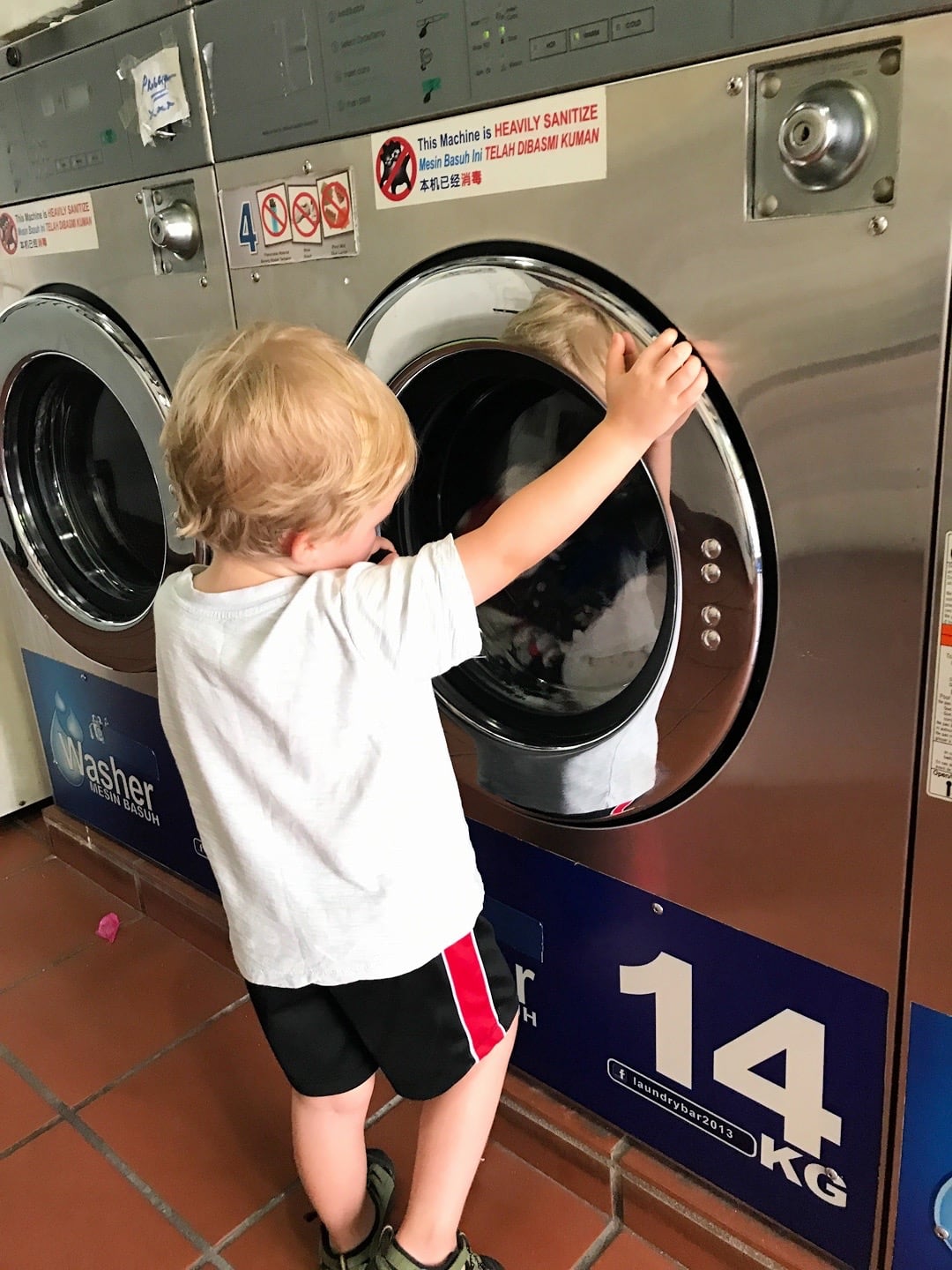
If you need to get some laundry done in Georgetown, I’d recommend Laundry Bar (map).
The price seemed very reasonable (about US$1 to wash and US$1 to dry) and washing and drying took just over an hour total.
We had a full load in the washer but split our load over two dryers per a review I read on Google, which seemed to do the trick. At the end of our stay in Georgetown, I attempted to dry a full load in just one dryer and ended up putting twice as many coins in and having it take twice as long.
There’s a change machine on site, detergent and sanitizer are automatically added (no need to buy any), and it’s all halal for our Muslim friends out there.
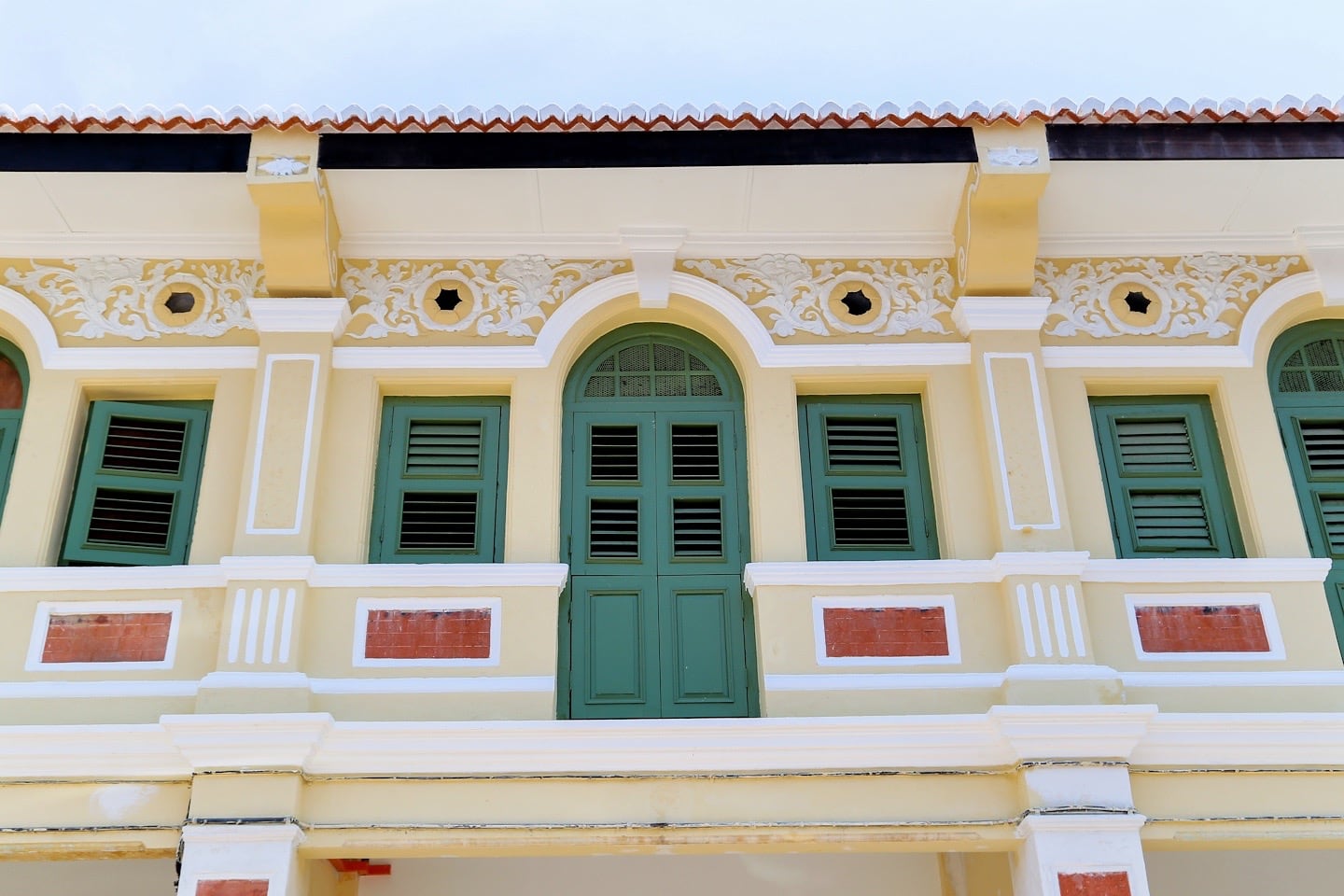
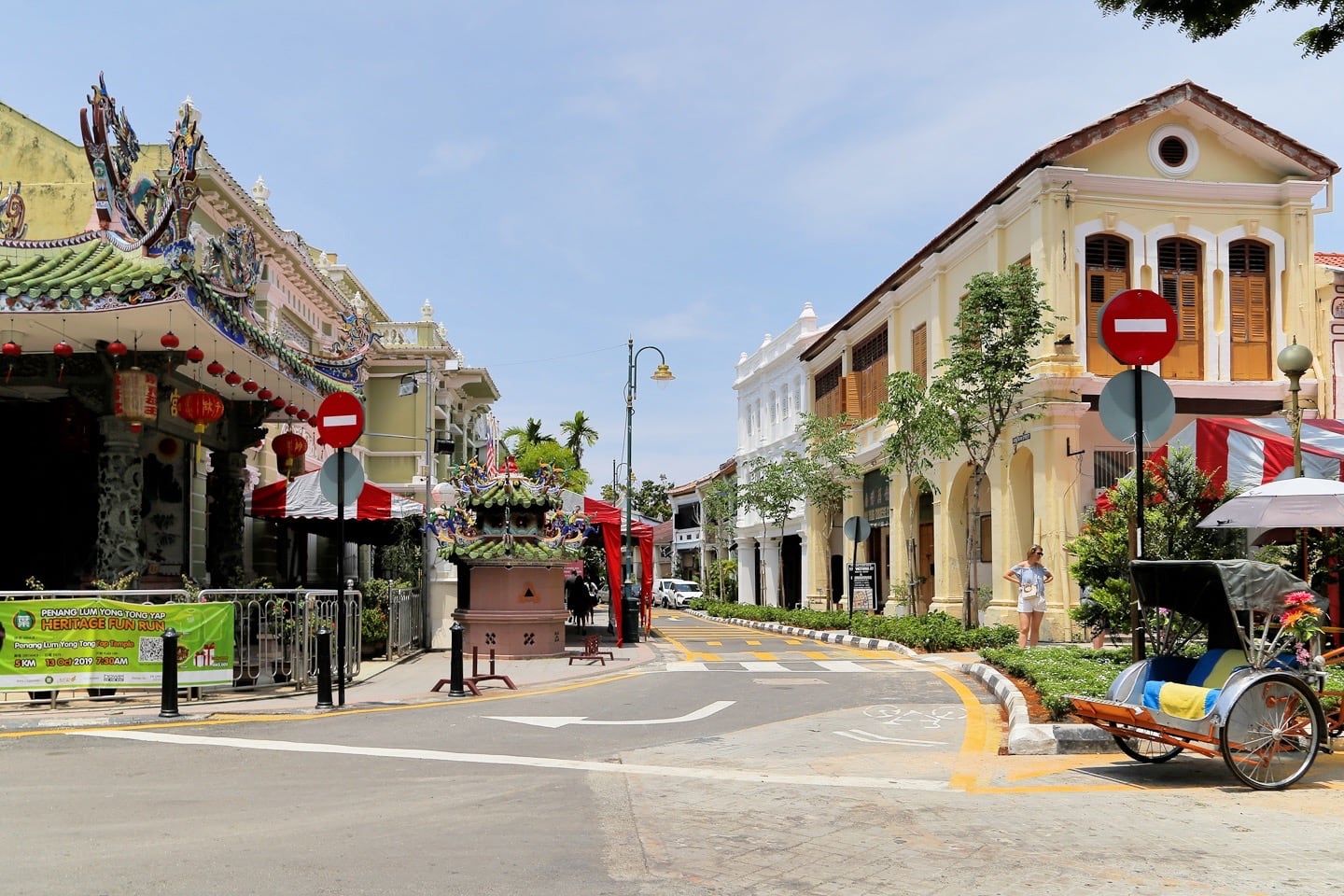
George Town UNESCO World Heritage Site
The back story behind UNESCO towns always fascinates me. There are usually two key characteristics that make a UNESCO town a UNESCO town: extraordinary historical significance and value to humankind, and preservation.
But how these towns end up in the 21st century in this state is the really interesting part. Nearly always there’s a significant aspect of the town’s history that is characterized by decline and even abandonment. Otherwise, mid-twentieth century progress would have had its way with the town core, leveling the essential character in the name of progress, modernization, and urban renewal.
To get to this point, economic interest in the town had to have waned. Yet, to be historically significant, that meant these towns were once prominent centers such as former capitals, economic powerhouses, or early settlements.
George Town is no exception. It was one of the most significant British and Chinese ports in Southeast Asia in the 19th century, then the neglected waterfront district of Penang in the mid-20th century, before being reborn in the early 21st century as a major tourist draw.
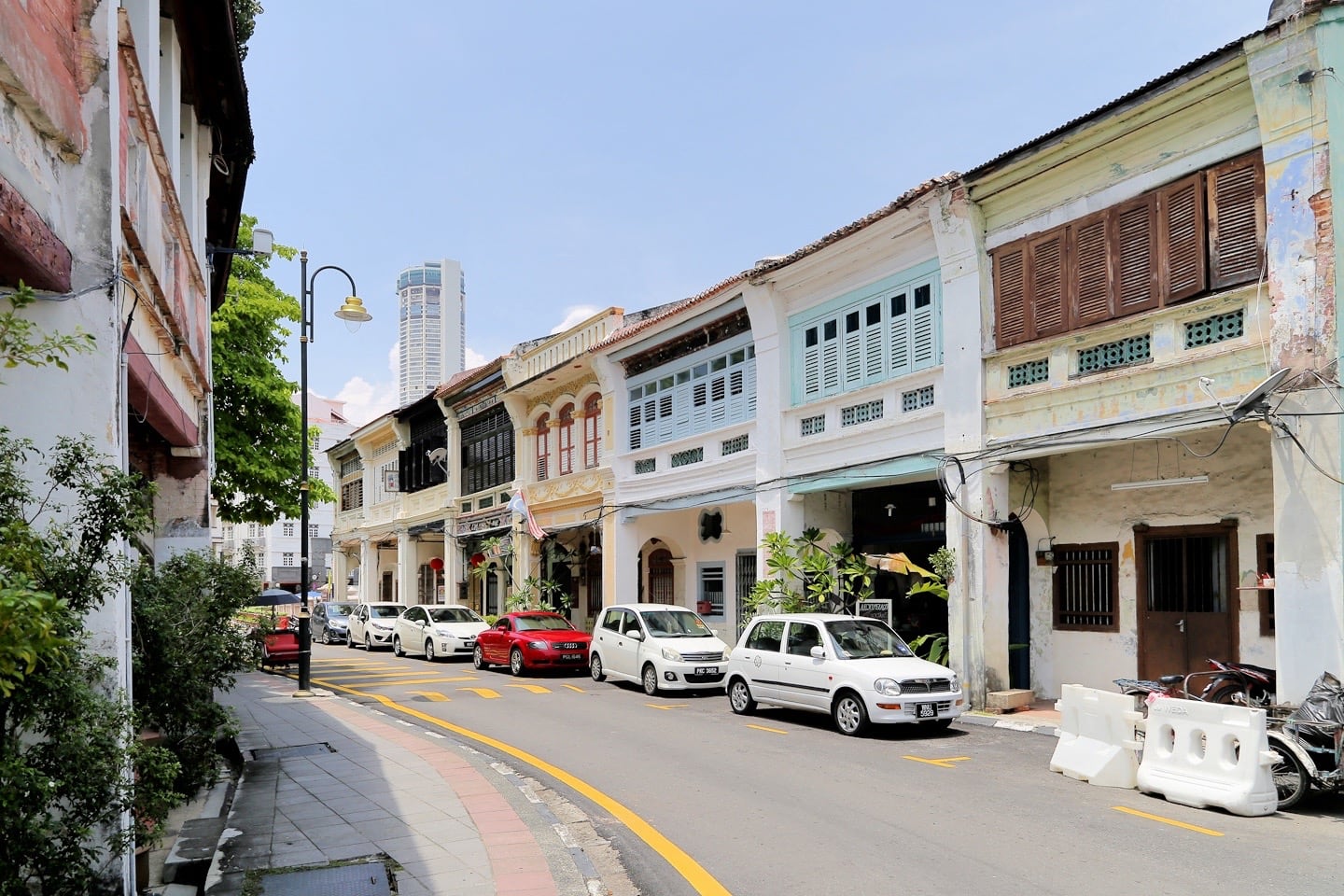
Renovated Chinese shophouses line many of the streets of Old Town.
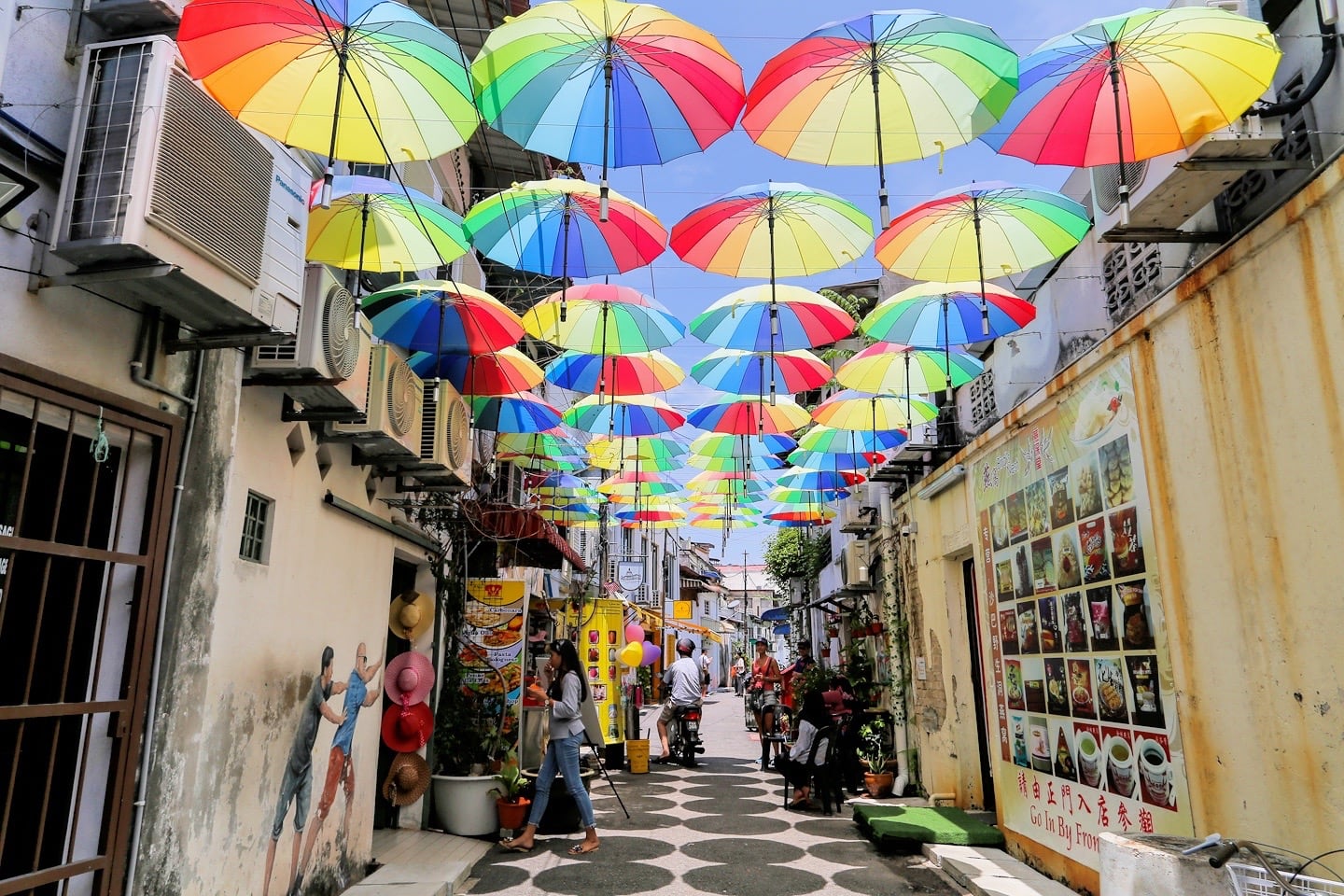
Umbrella Alley (see it on the map).
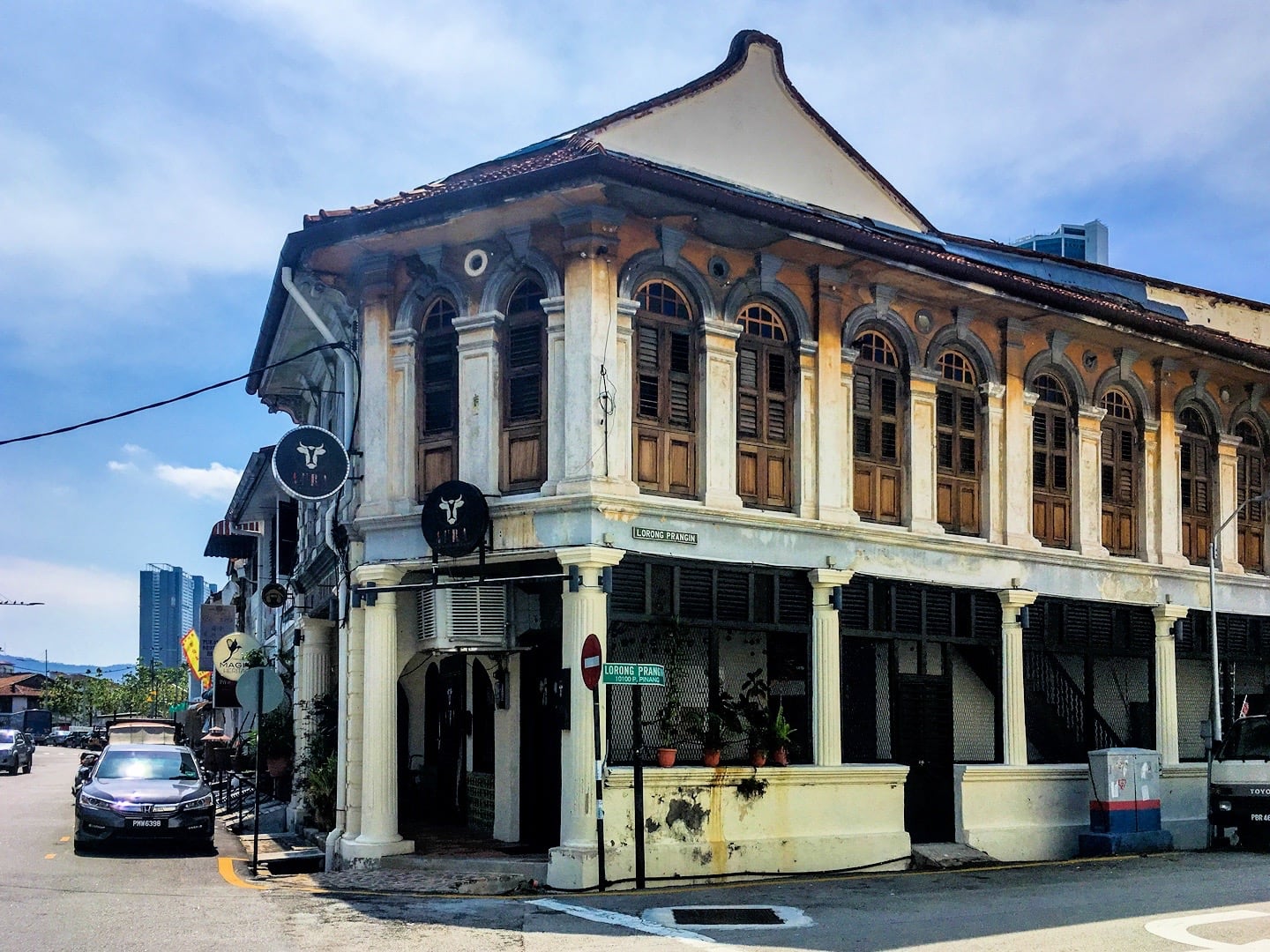

Post-nap play time.
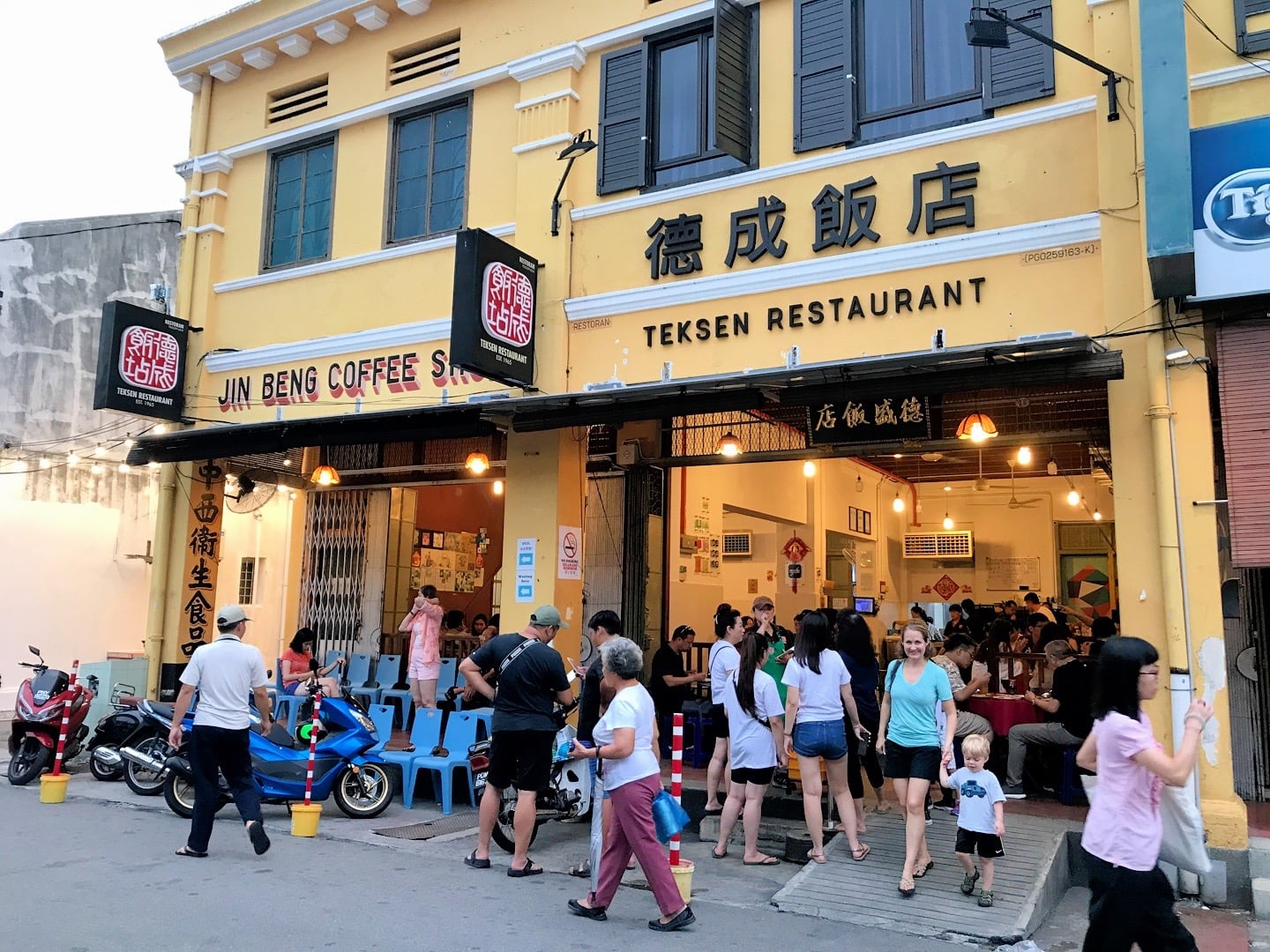
Teksen is one of the oldest, best, and most popular restaurants in George Town serving traditional Penang Chinese cuisine (find it on the map).
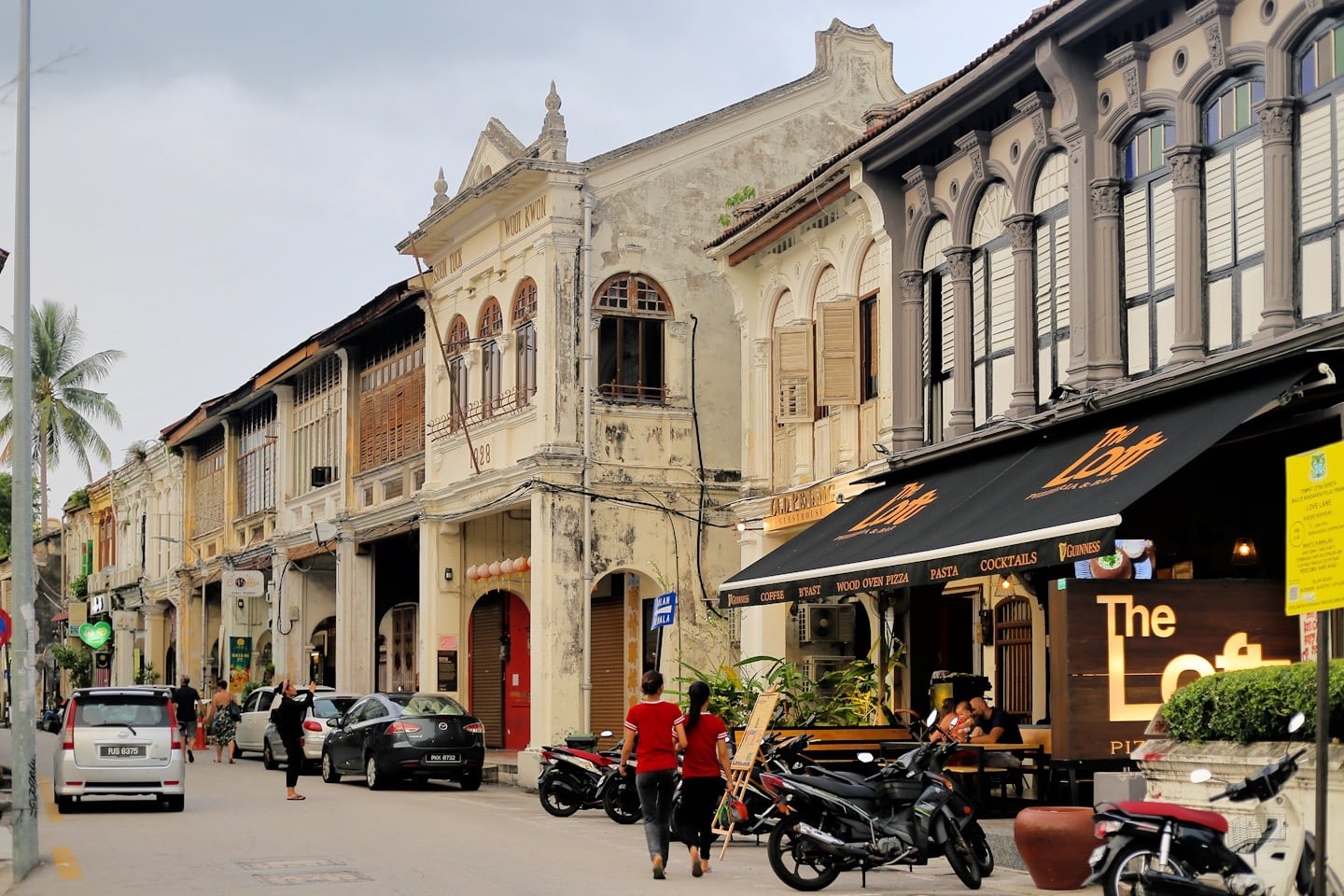
Strolling & Bar Hopping Love Lane
Love Lane is the nightlife district of George Town. Reading about Love Lane prior to our arrival, I didn’t think it would be an area we’d like much. I pictured a trashy, loud, kitschy, red-light district with zero charm. Oh, how wrong I was.
Yes, it’s a tourist enclave, but for good reason — some of the town’s best restaurants are in the area, there are countless little shops to peruse, and it’s one of the most photographic streets in all of George Town.
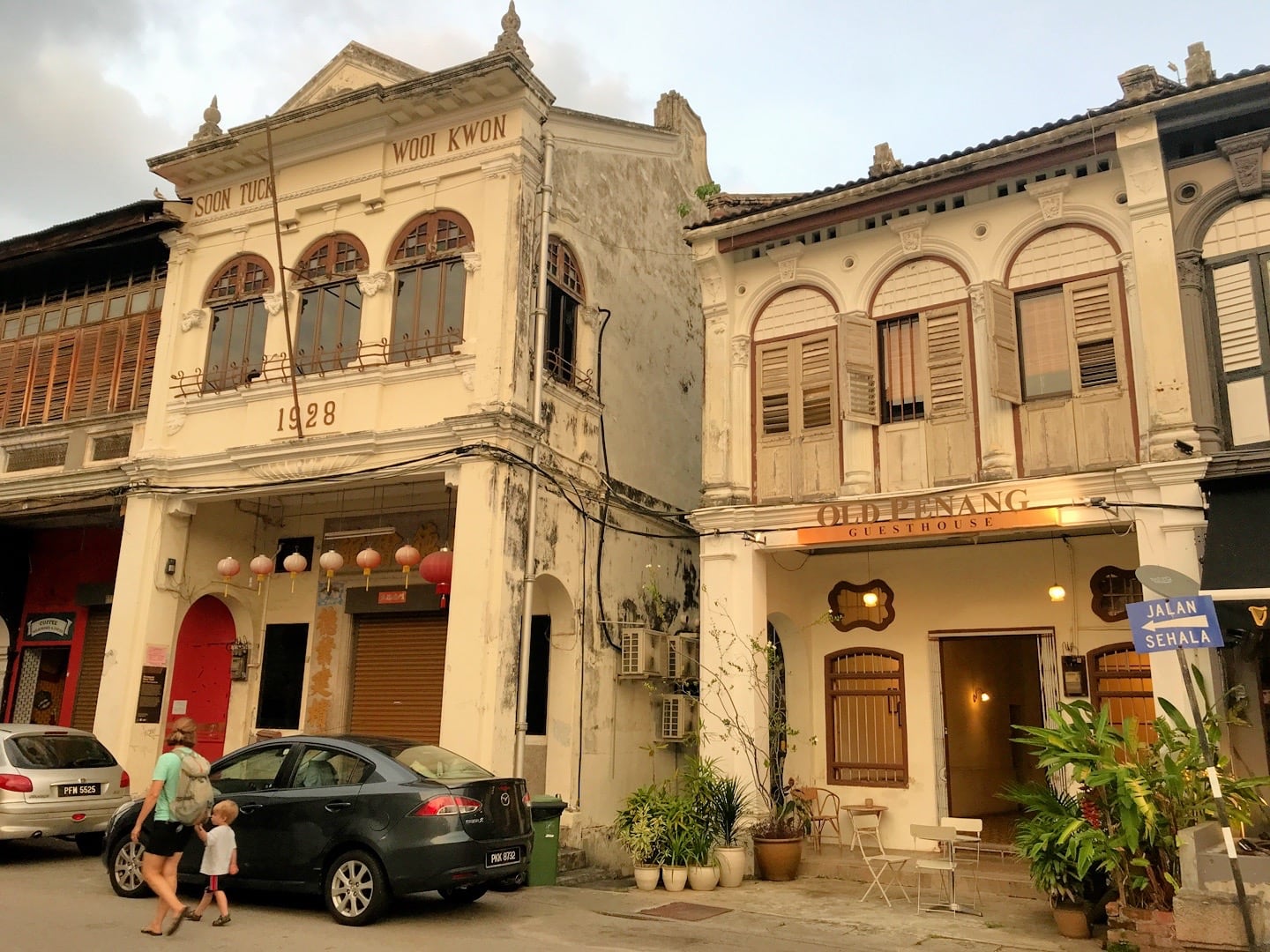
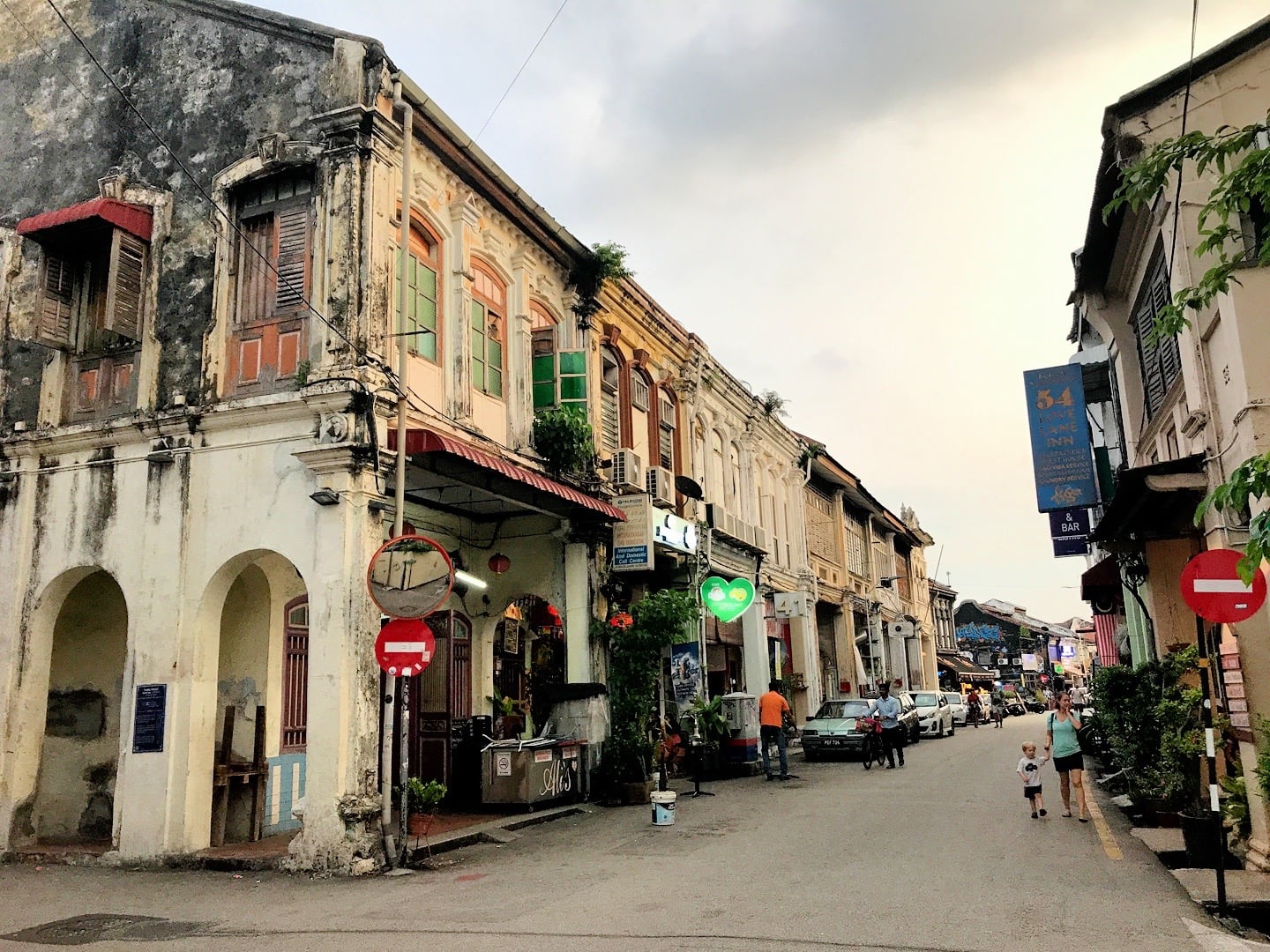
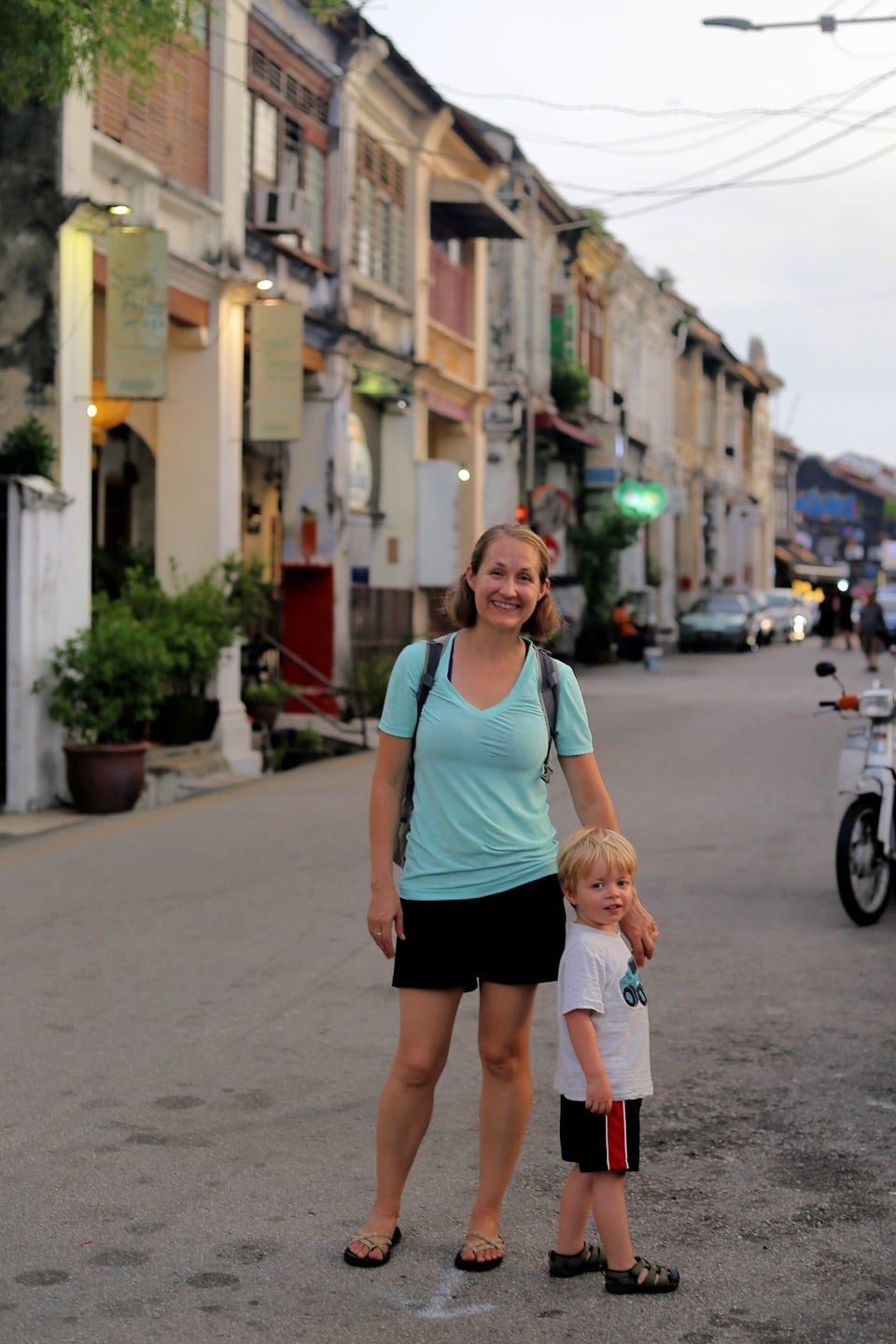
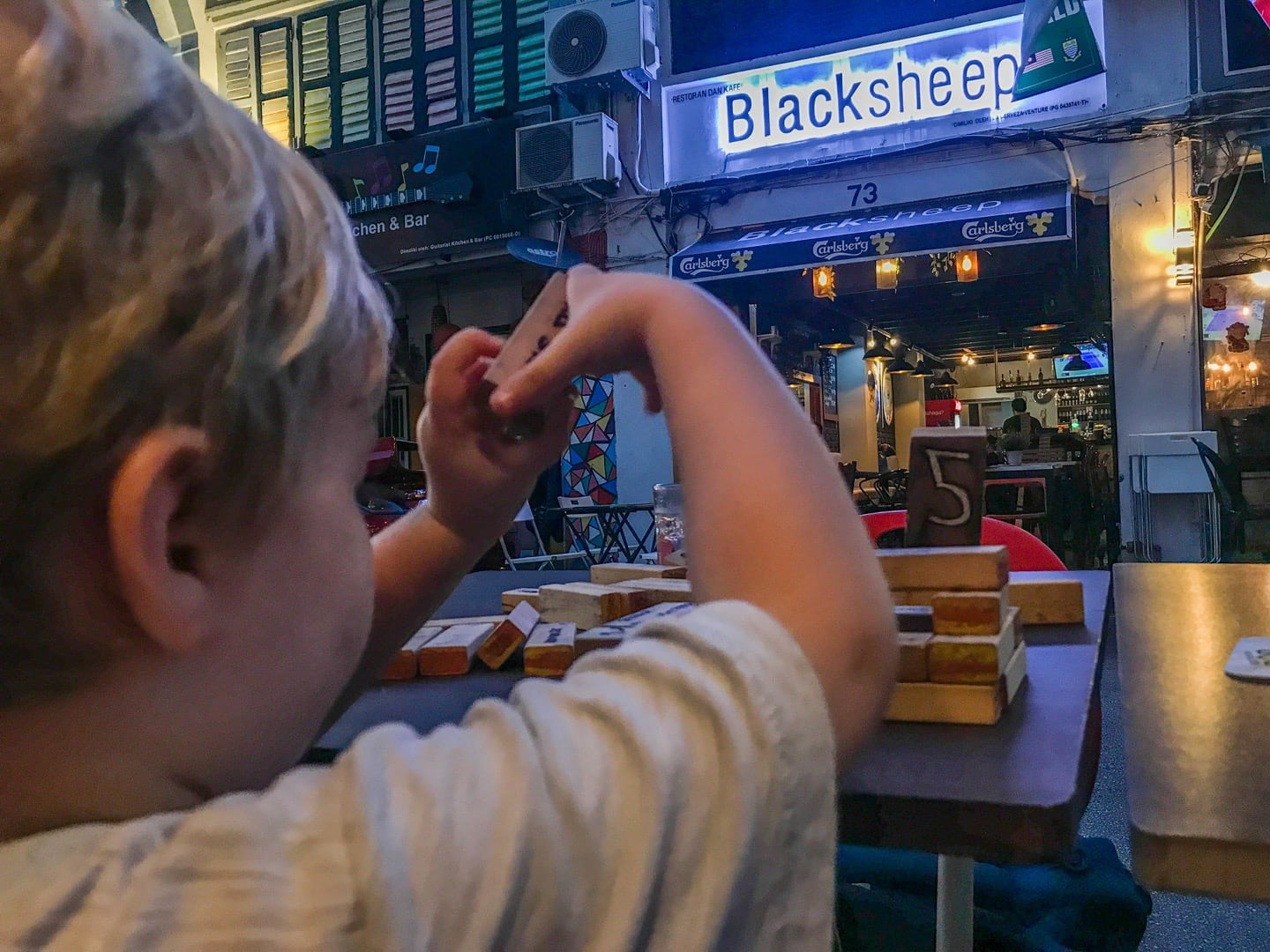
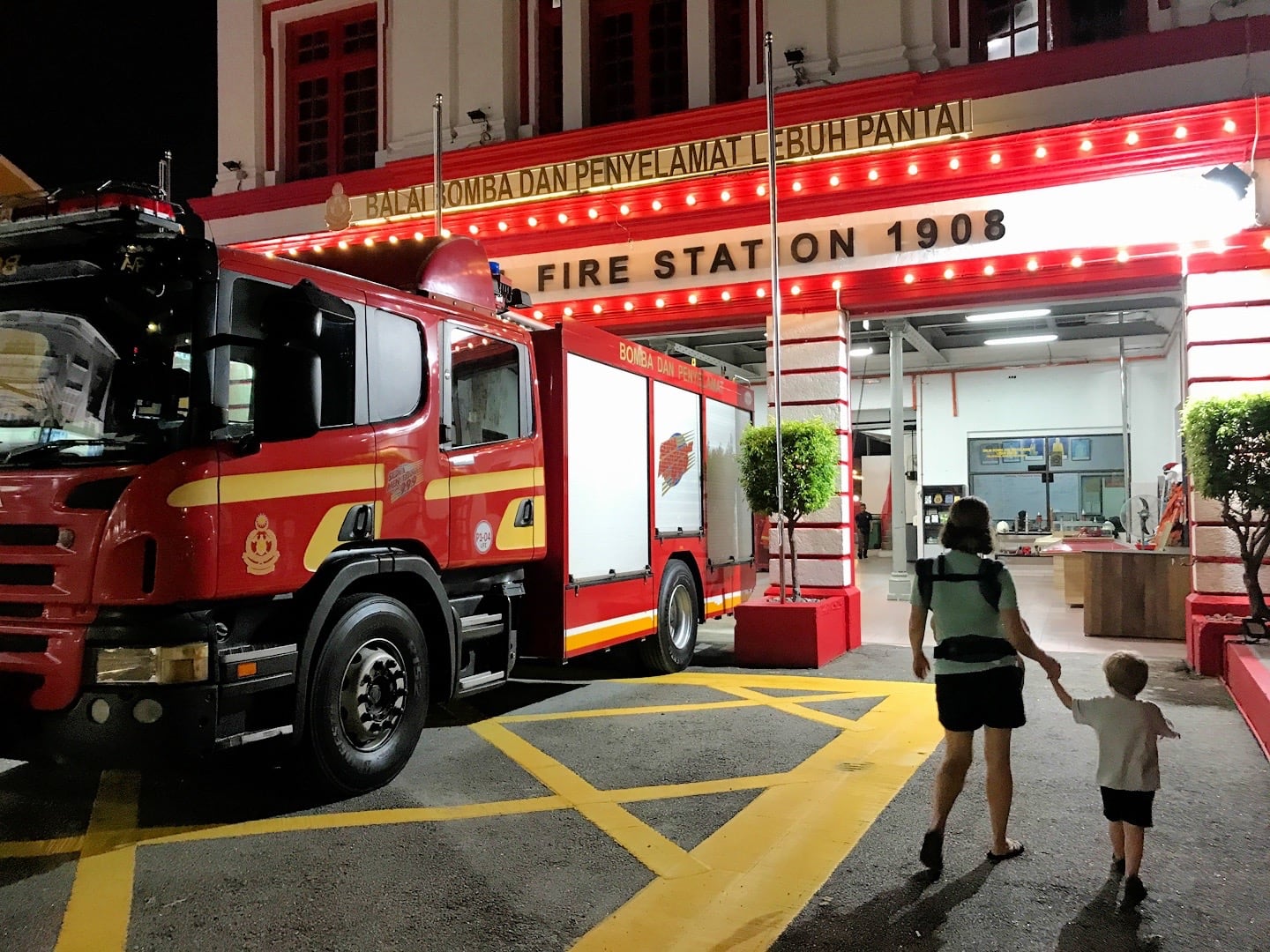
Walking back one evening, we passed this fire station. Little did we know that it was yet another historic landmark. At the bequest of our 3-year-old, we took a chance walking in and got a quick mini-tour in the process by real, live firefighters.
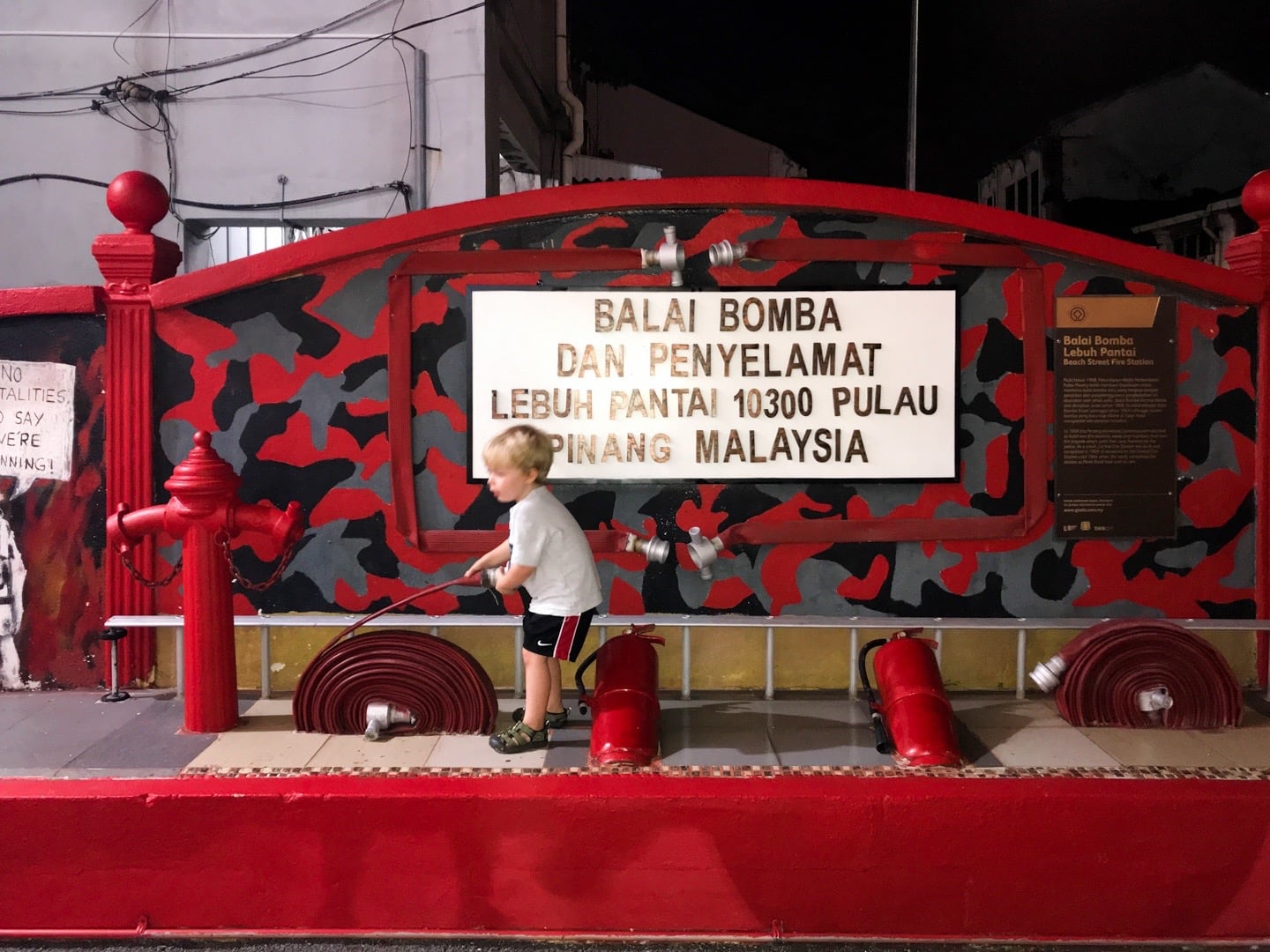
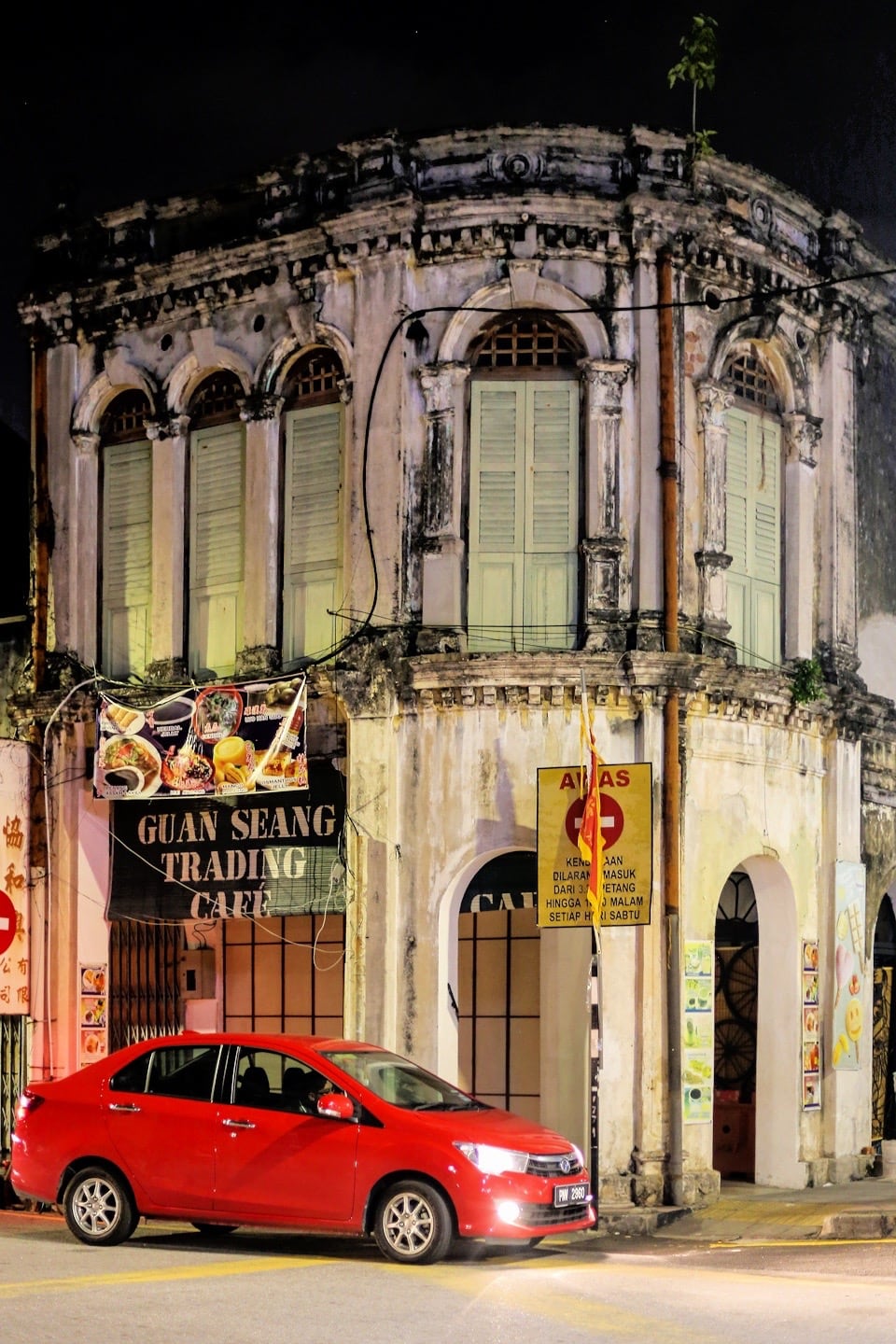
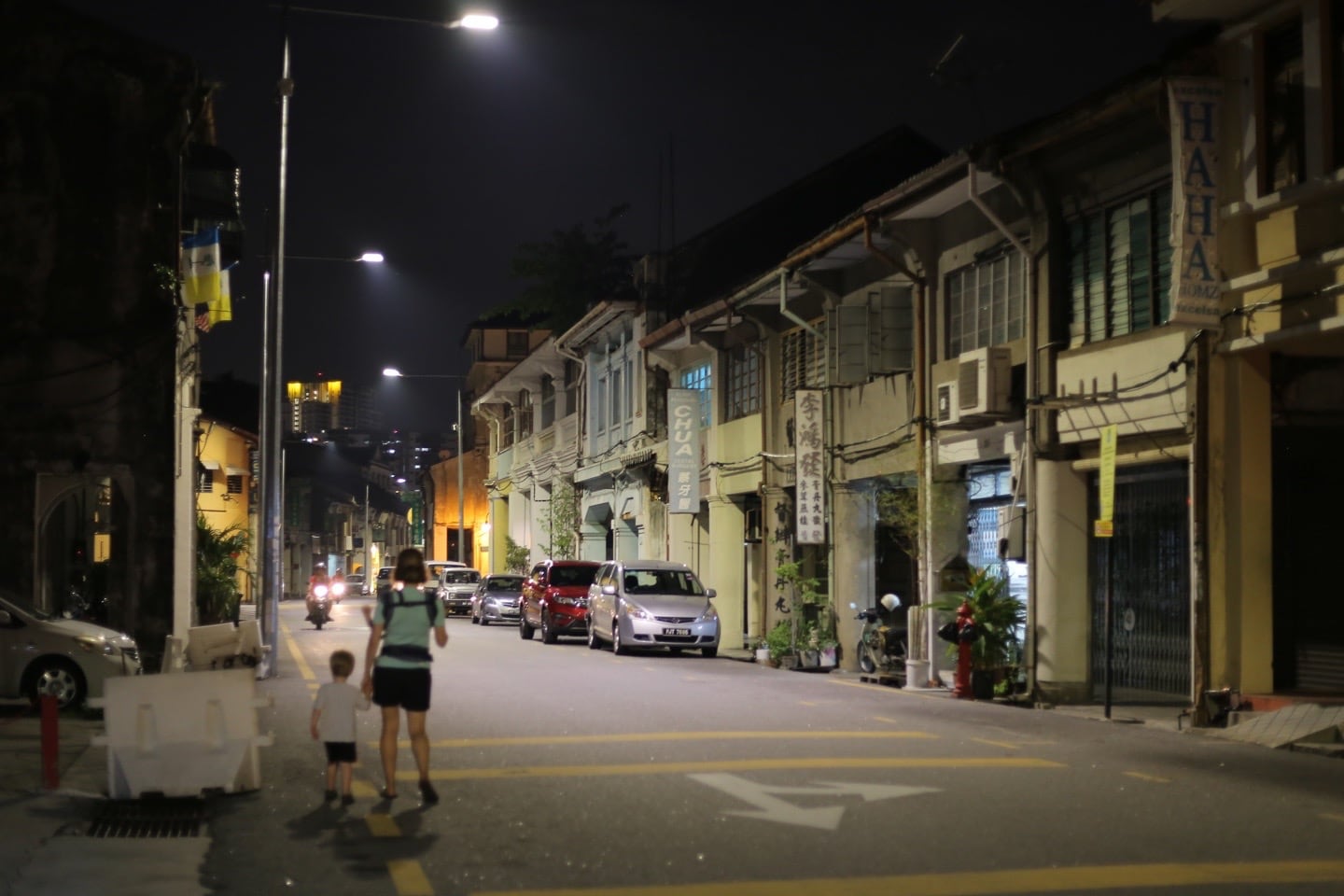
After the boys went down for the night, we began to settle into our routine of cracking open a couple of local beers and listening to the Chinese karaoke around the corner from our front stoop.
Until things got weird. Tonight’s karaoke didn’t quite sound like other nights. It sounded like a full on party. A street party. Almost like a…
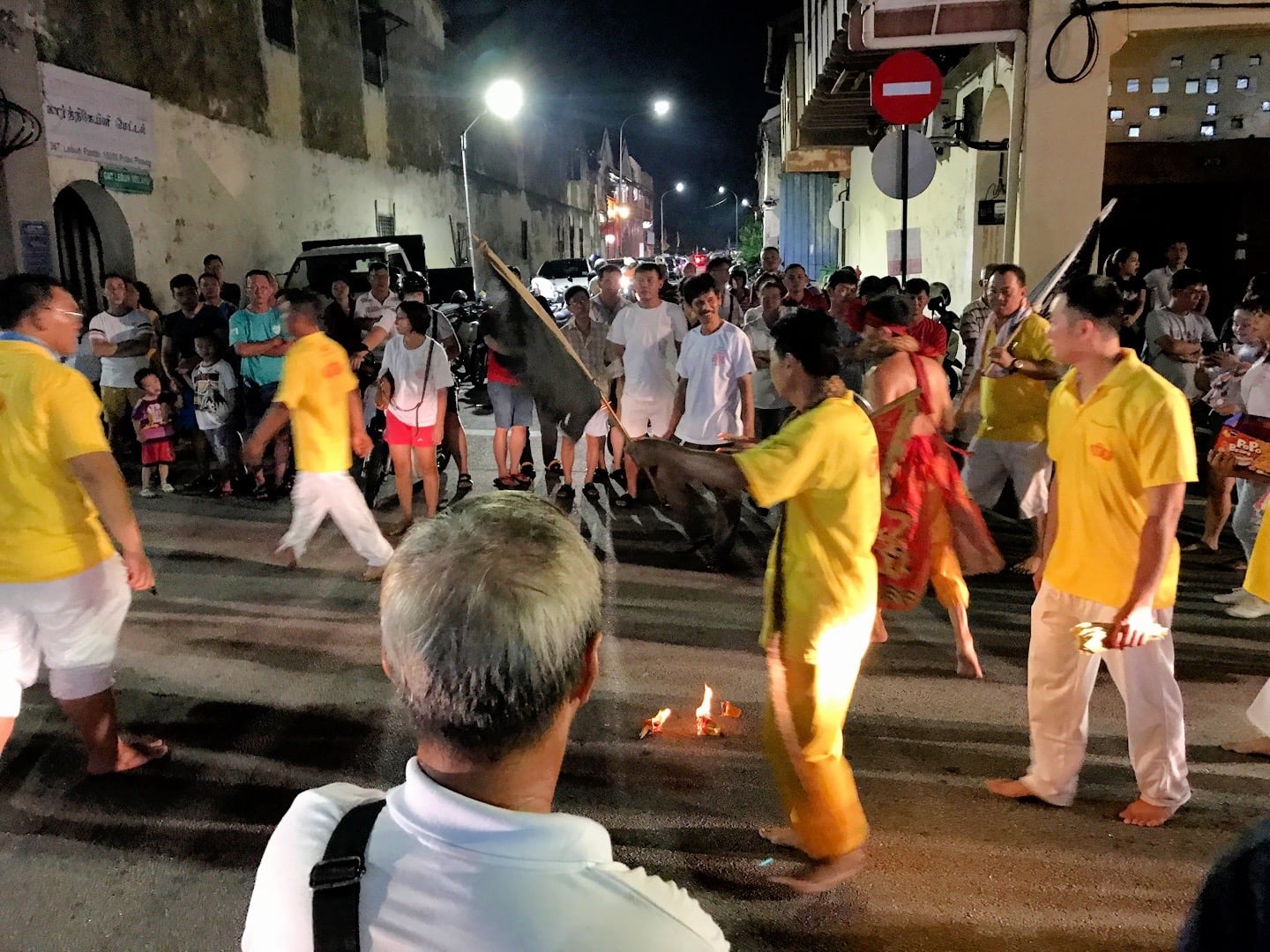
…parade! A night parade. On no particular holiday (that we knew of). We watched for 15 minutes as the procession of floats and uniformed groups marched by, and then it was over as quickly as it began.
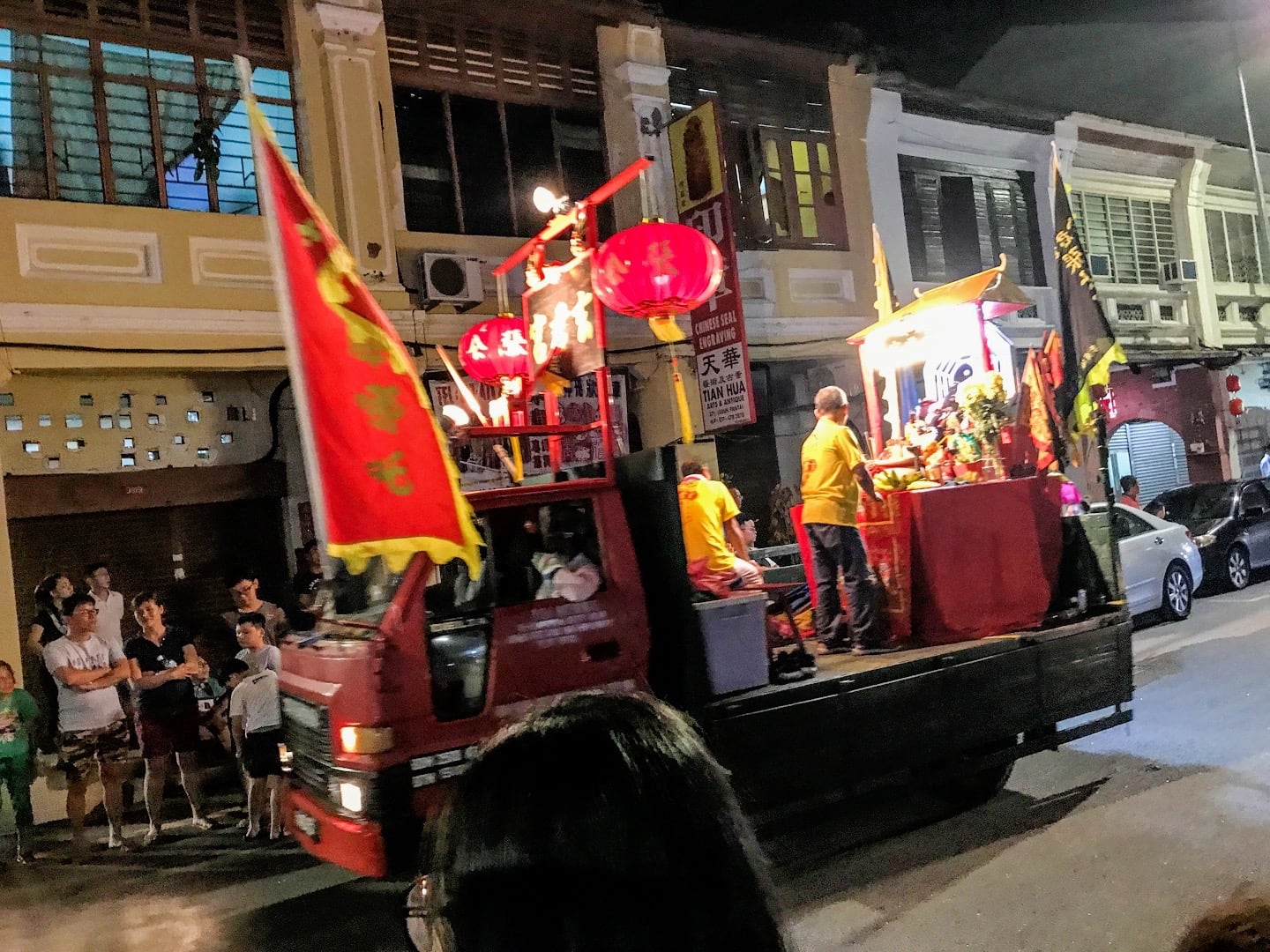
…and the karaoke down the street resumed per the usual.
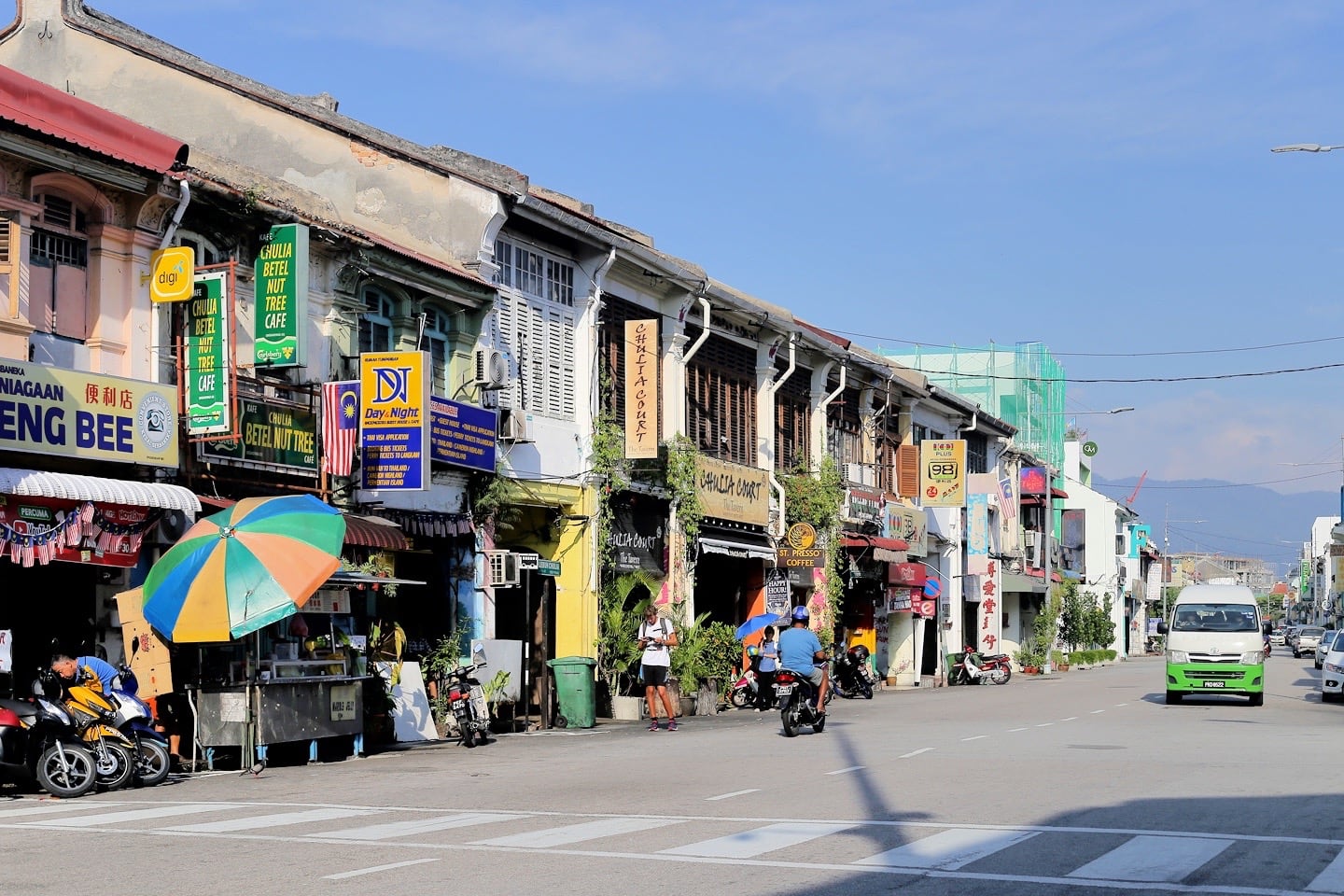
Chulia Street by day.
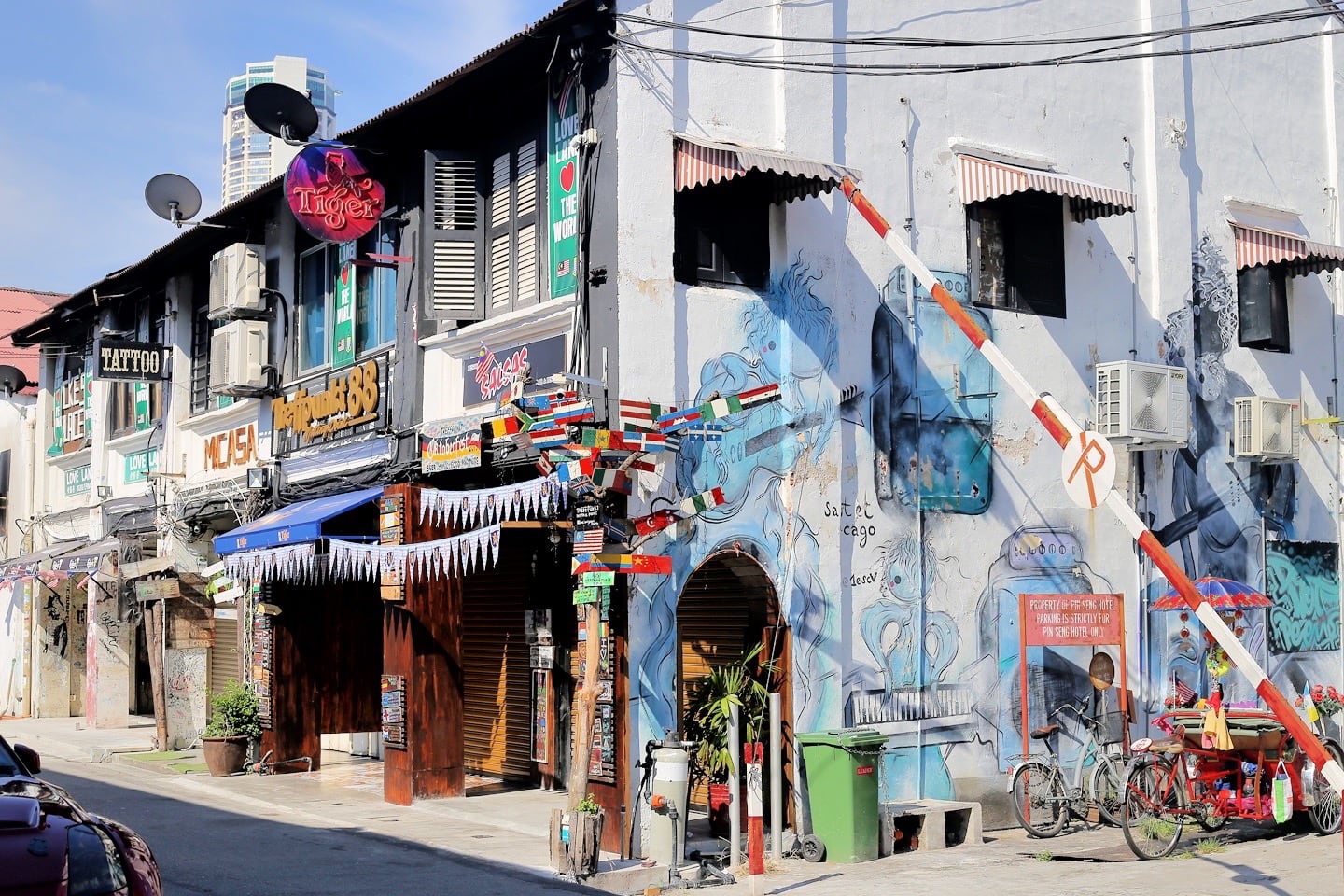
George Town is also known for its street art across Old Town.
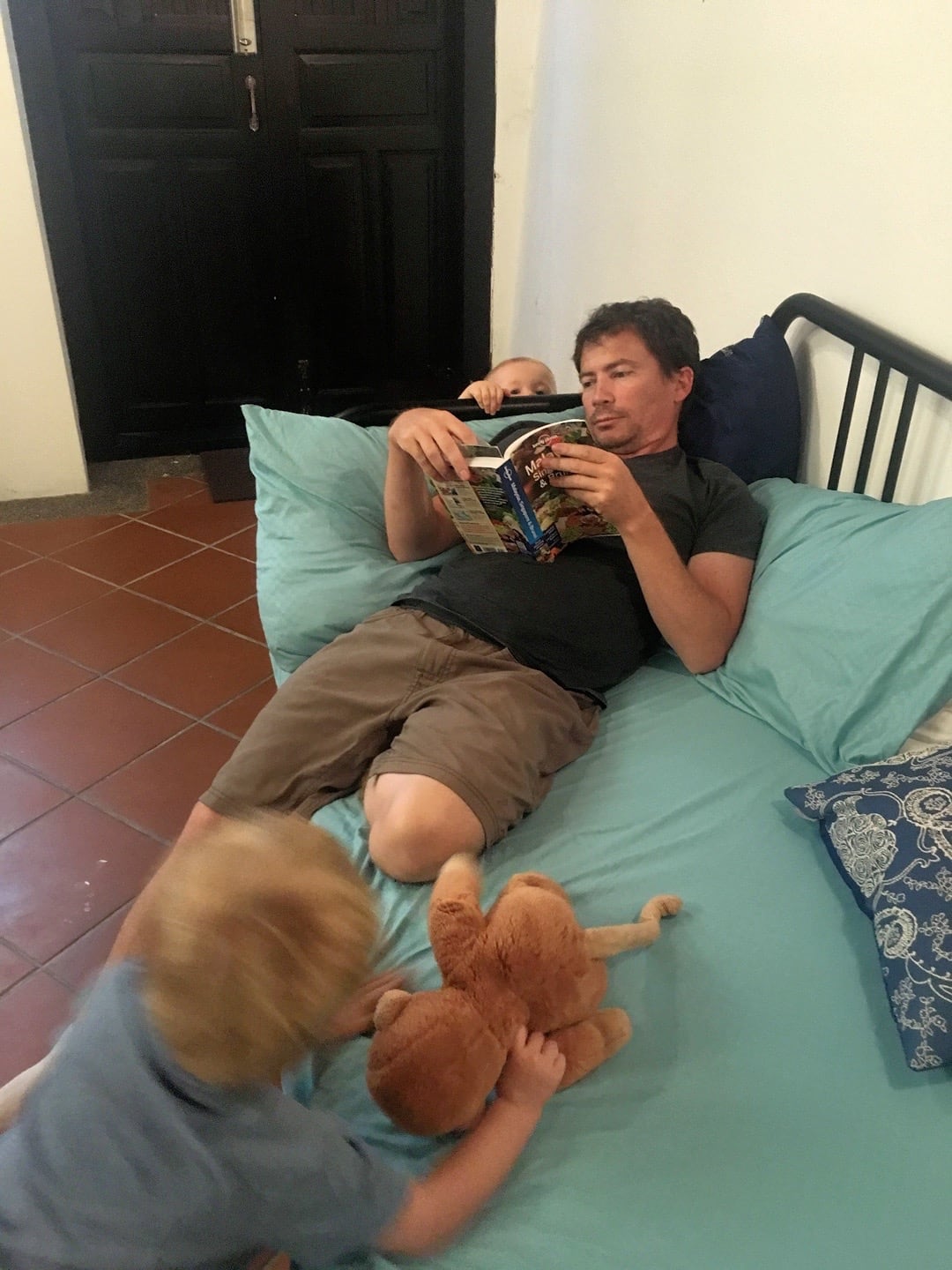
Downtime.
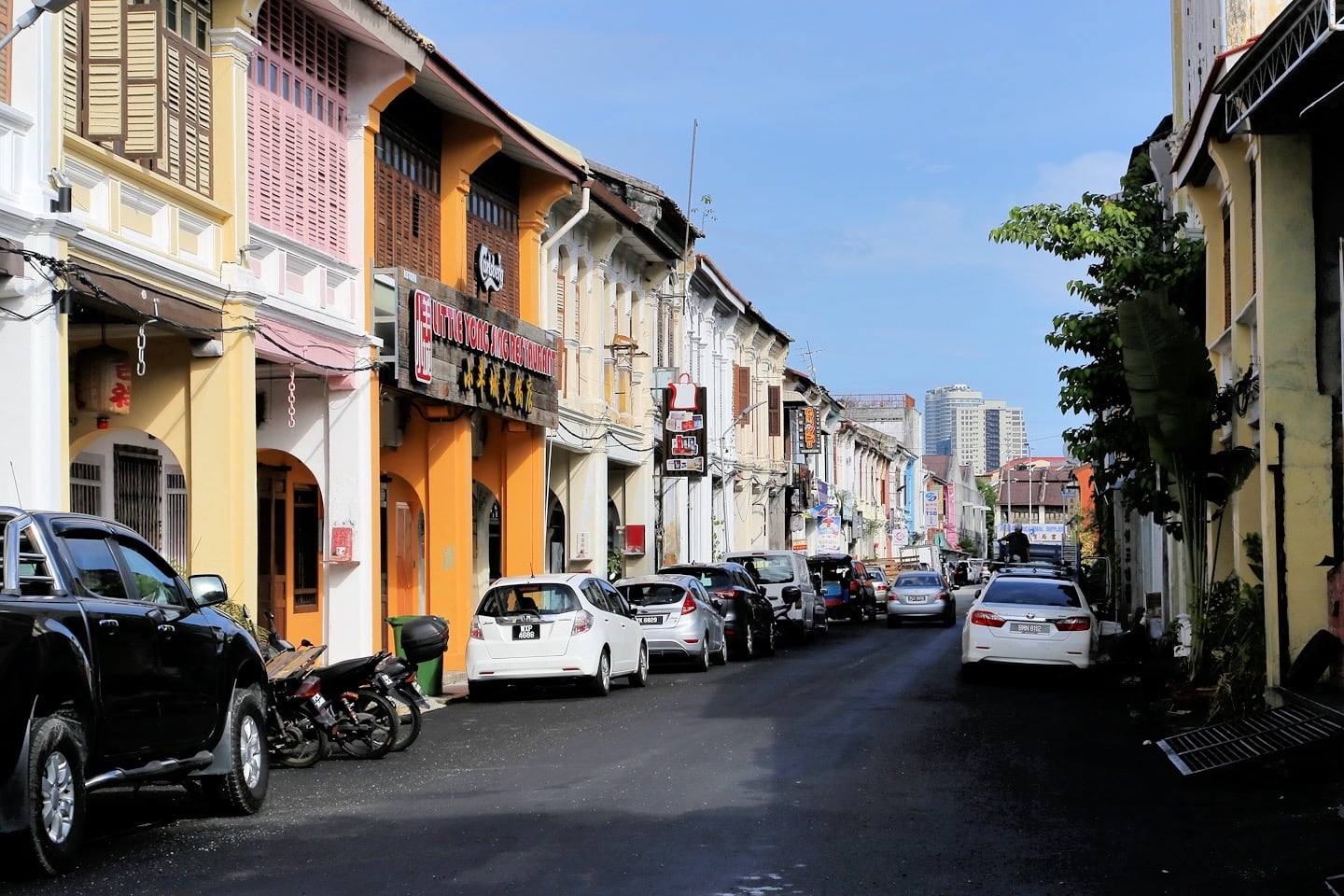
Lanes of historic Chinese row houses near our townhouse.
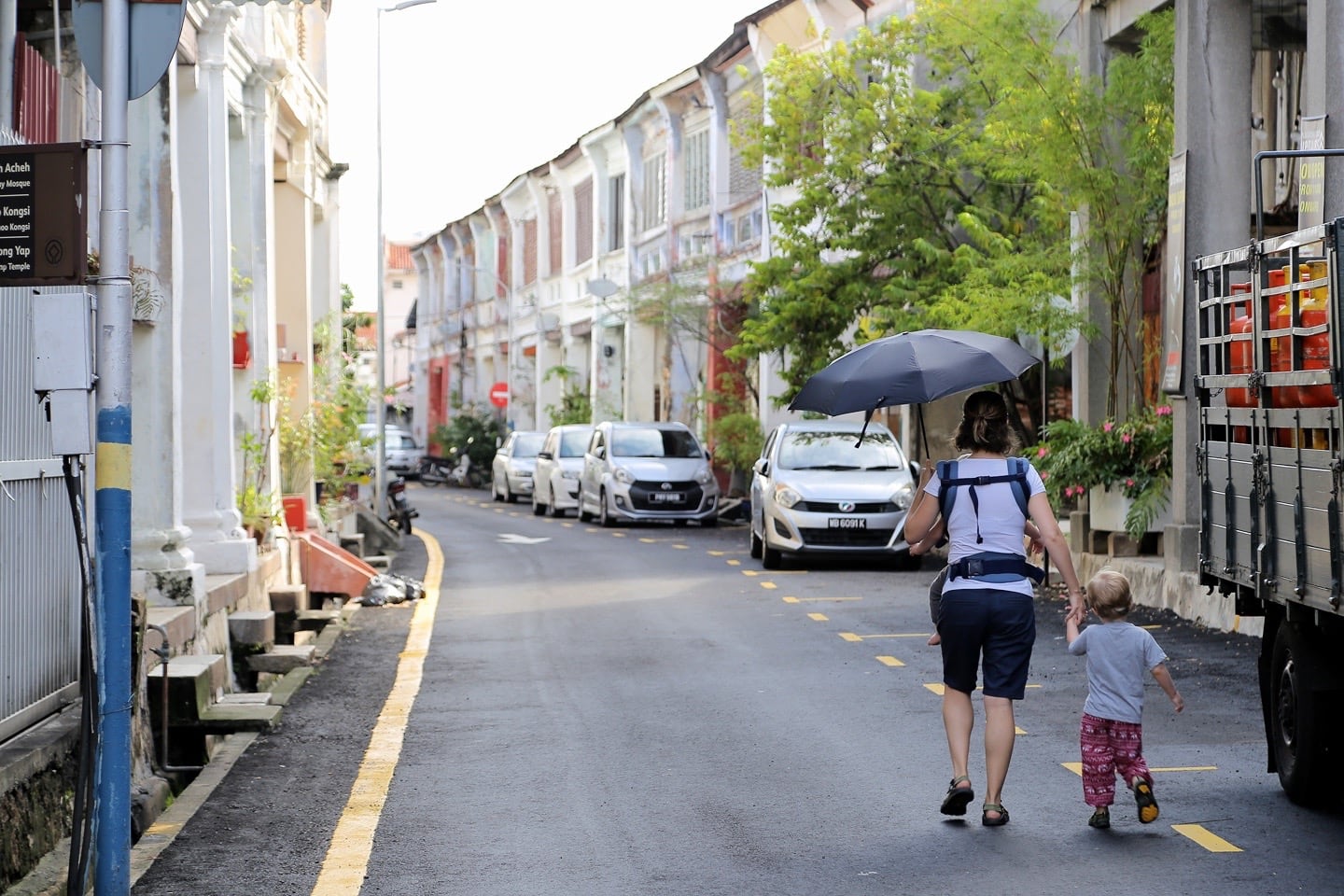
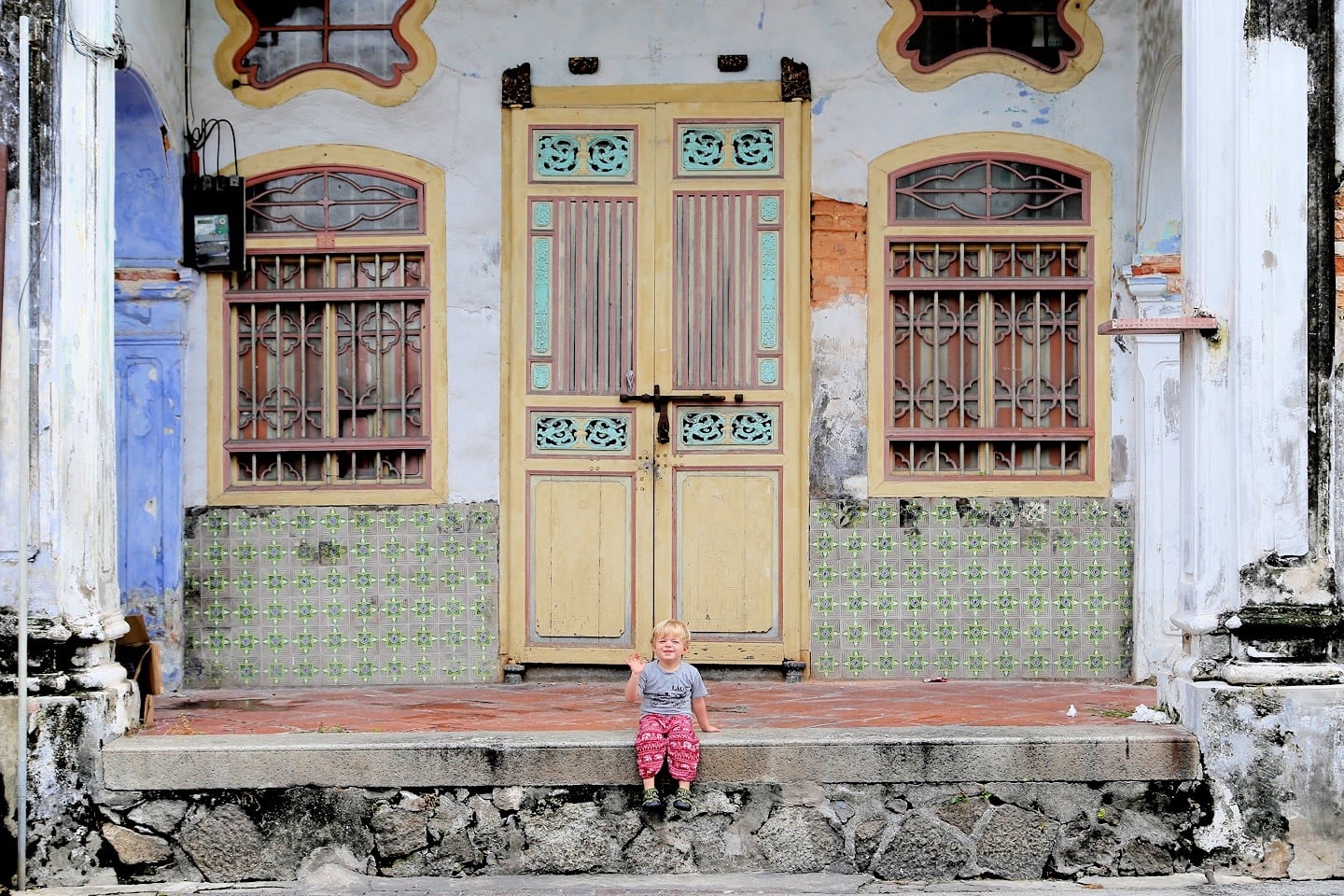
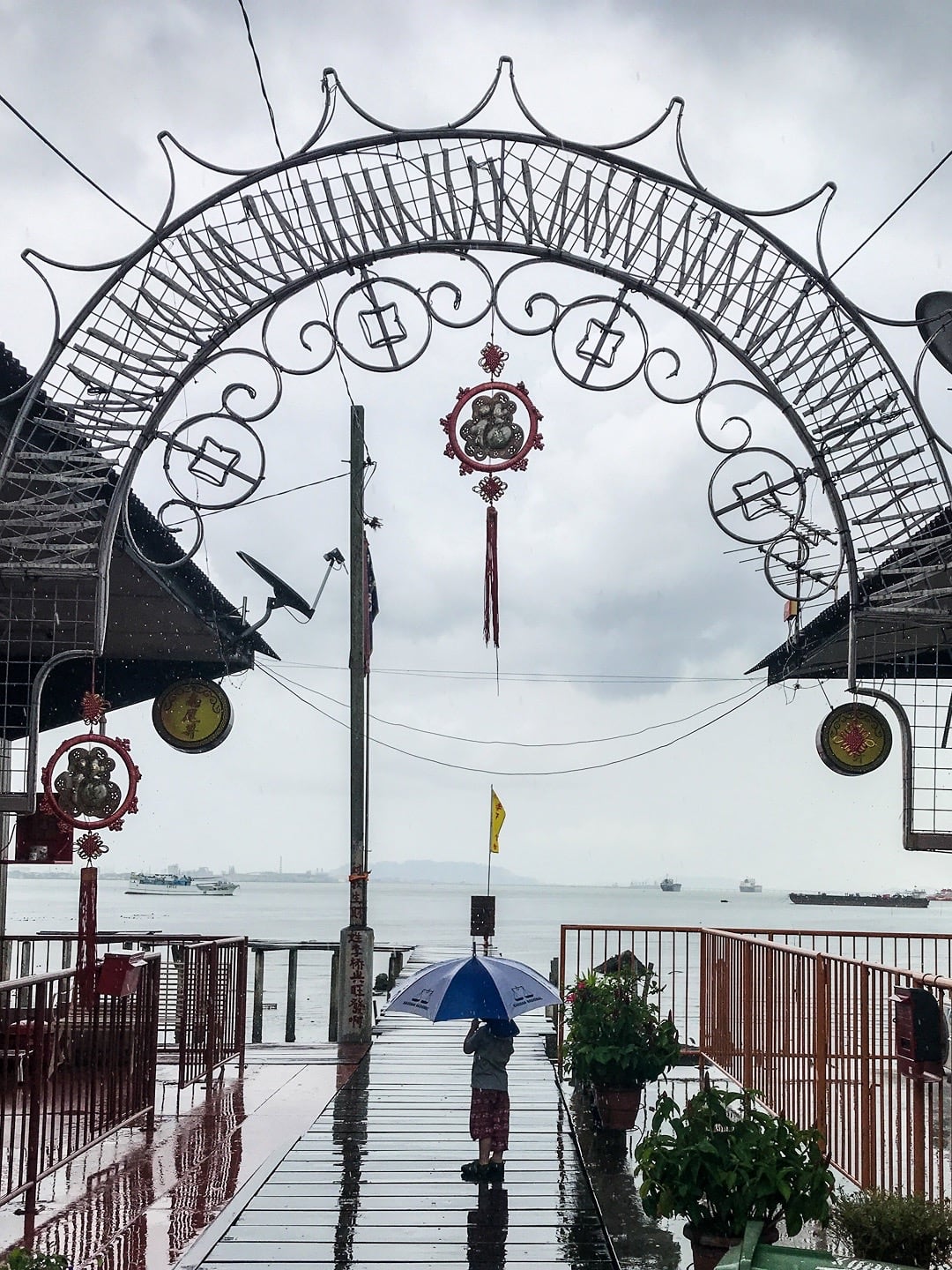
Rain Delay
Lori volunteered to take the boys for a brief post-nap stroll around the neighborhood so I could work on the blog a bit. Ten minutes into their walk, it started to rain. They barely managed to make it out to the end of one of the old Clan Jetties (find on map) before the skies really opened up.
Fortunately, by that time, they were near Art Lane (find on map), a long, covered alleyway covered with walls of street art and funky art installations. Unfortunately, however, they were trapped there for an hour.
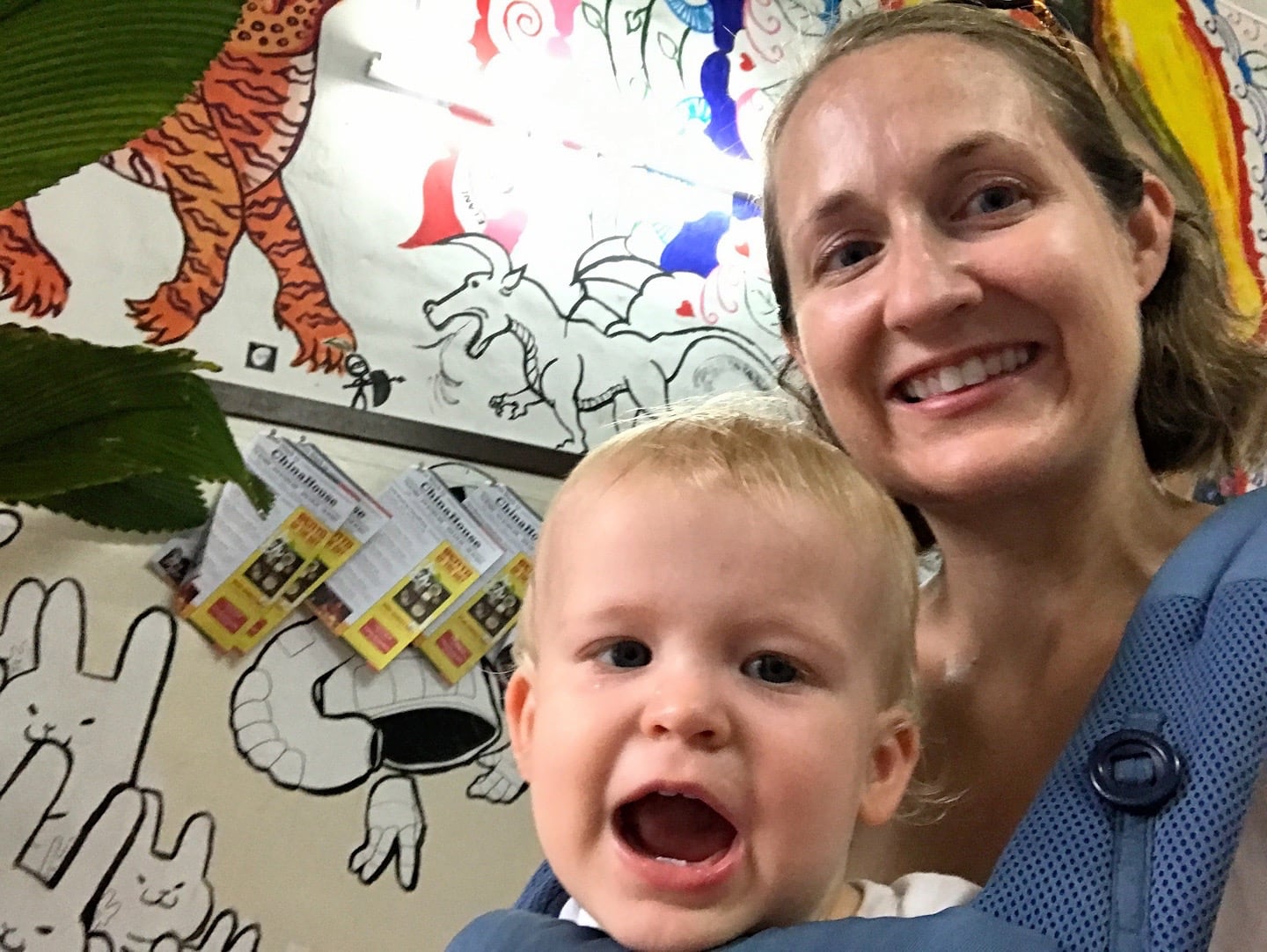
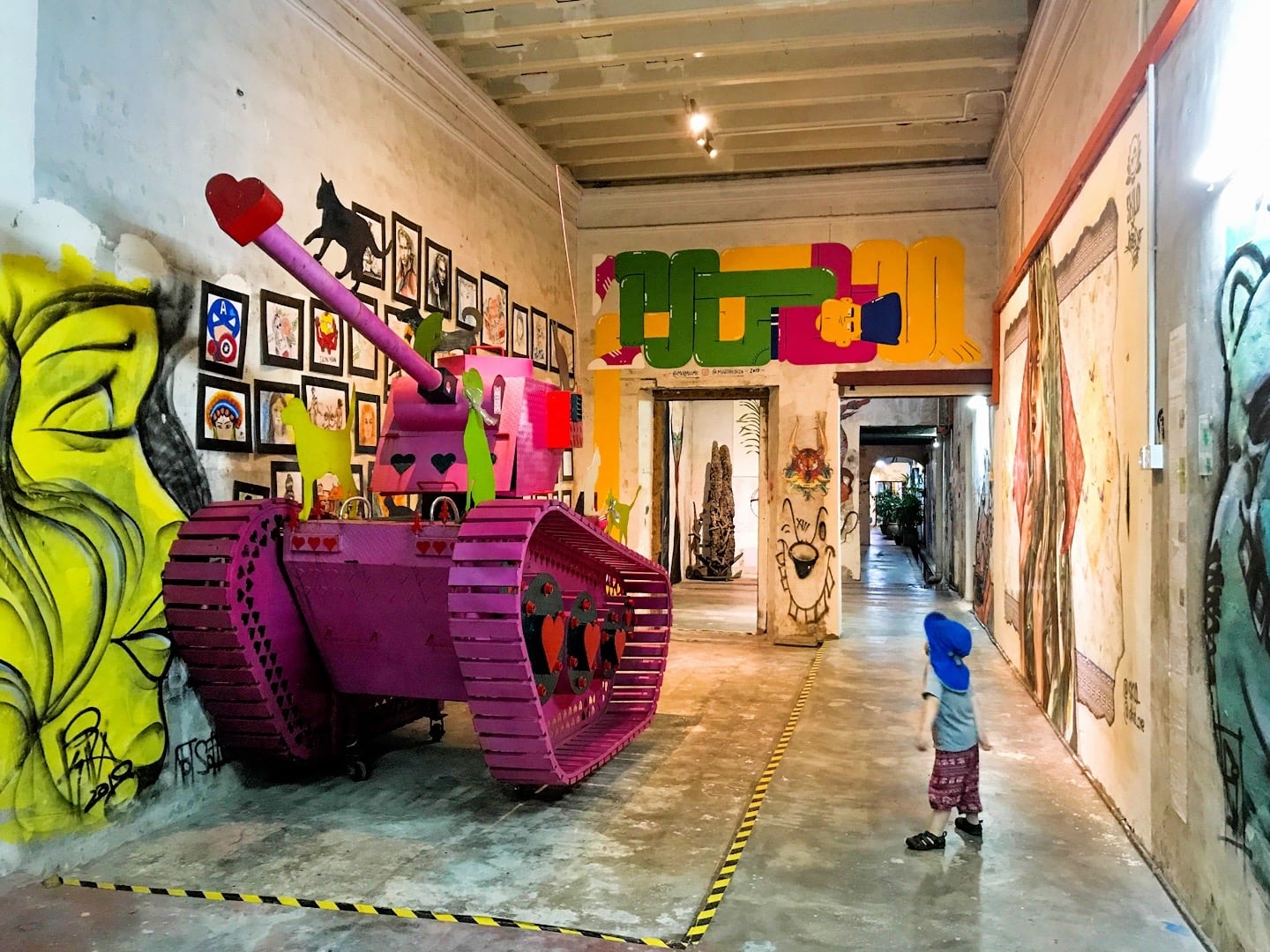
As soon as the rain let up enough to brave with an umbrella, I met them at China House (find on map), which quickly became one of our favorite places in all of George Town — a Malaysian McMenamims of sorts (for you Pacific Northwesterners), and the longest cafe in George Town.
Stretching an entire city block from Lebuh Victoria to Beach Street, China House is home to several smaller cafes and bars with their own quirky vibe:
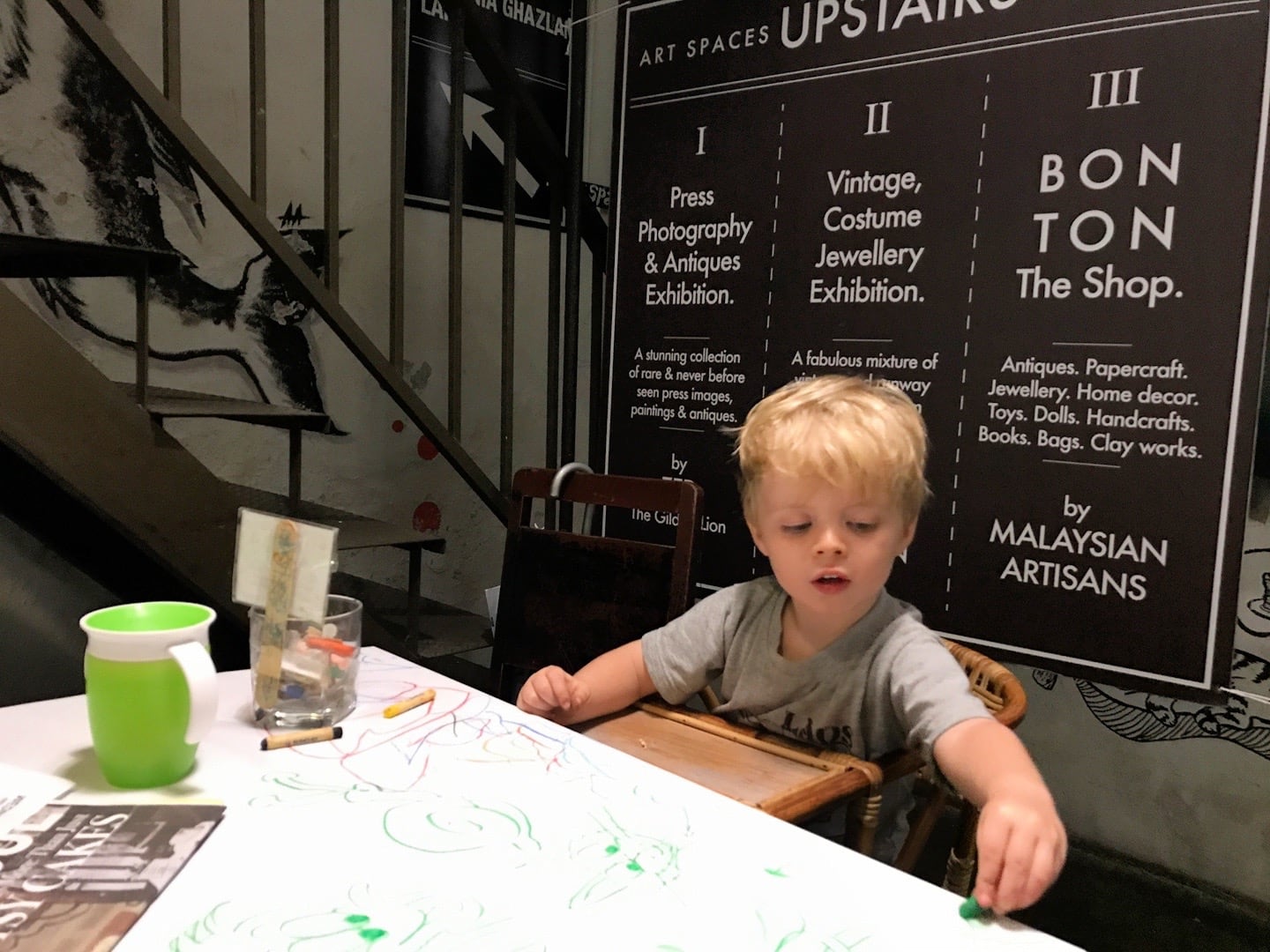
The entire place (including the bars) is very kid friendly, offering games, art activities, and tables covered with paper and glasses full of crayons.
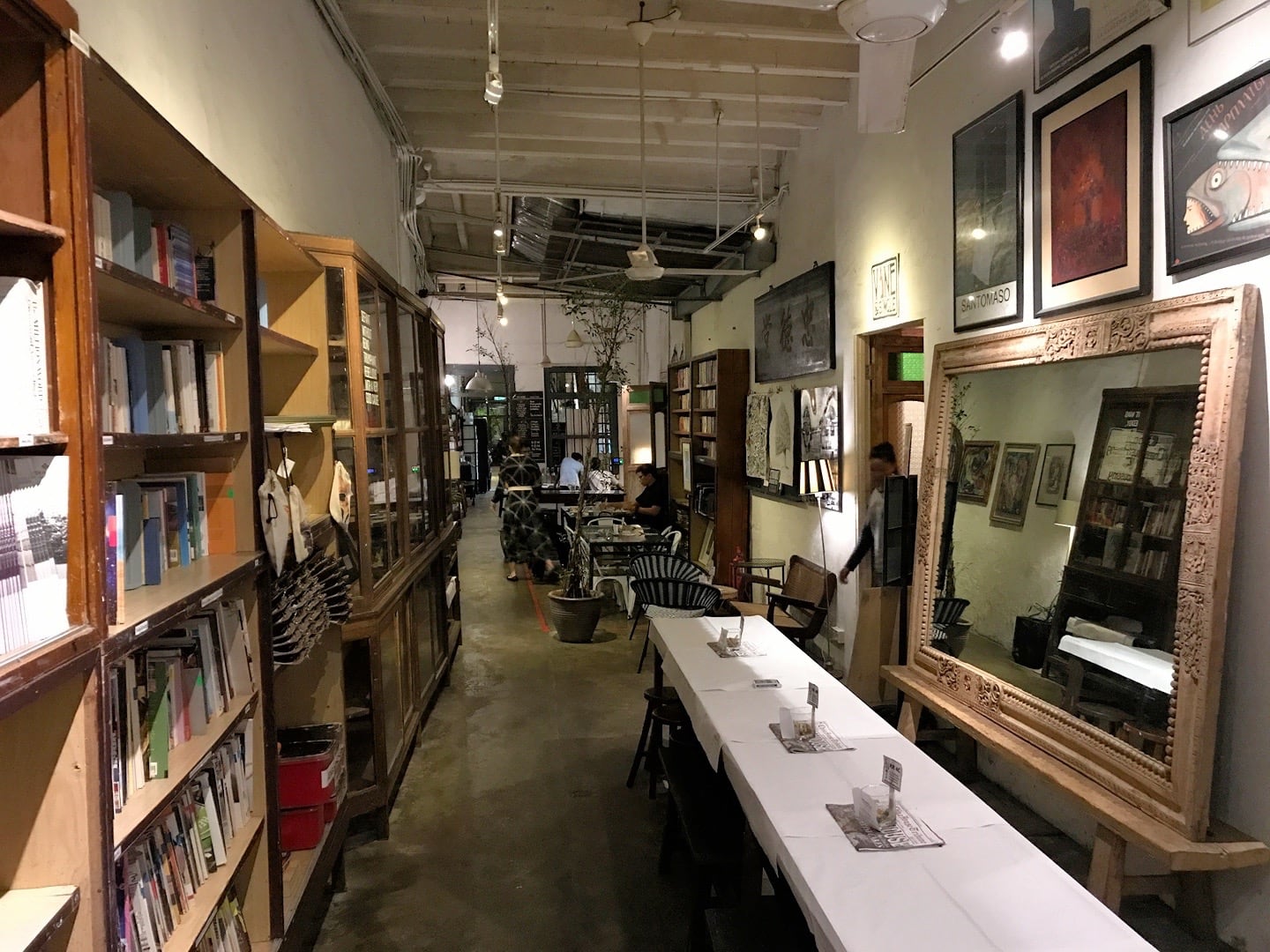
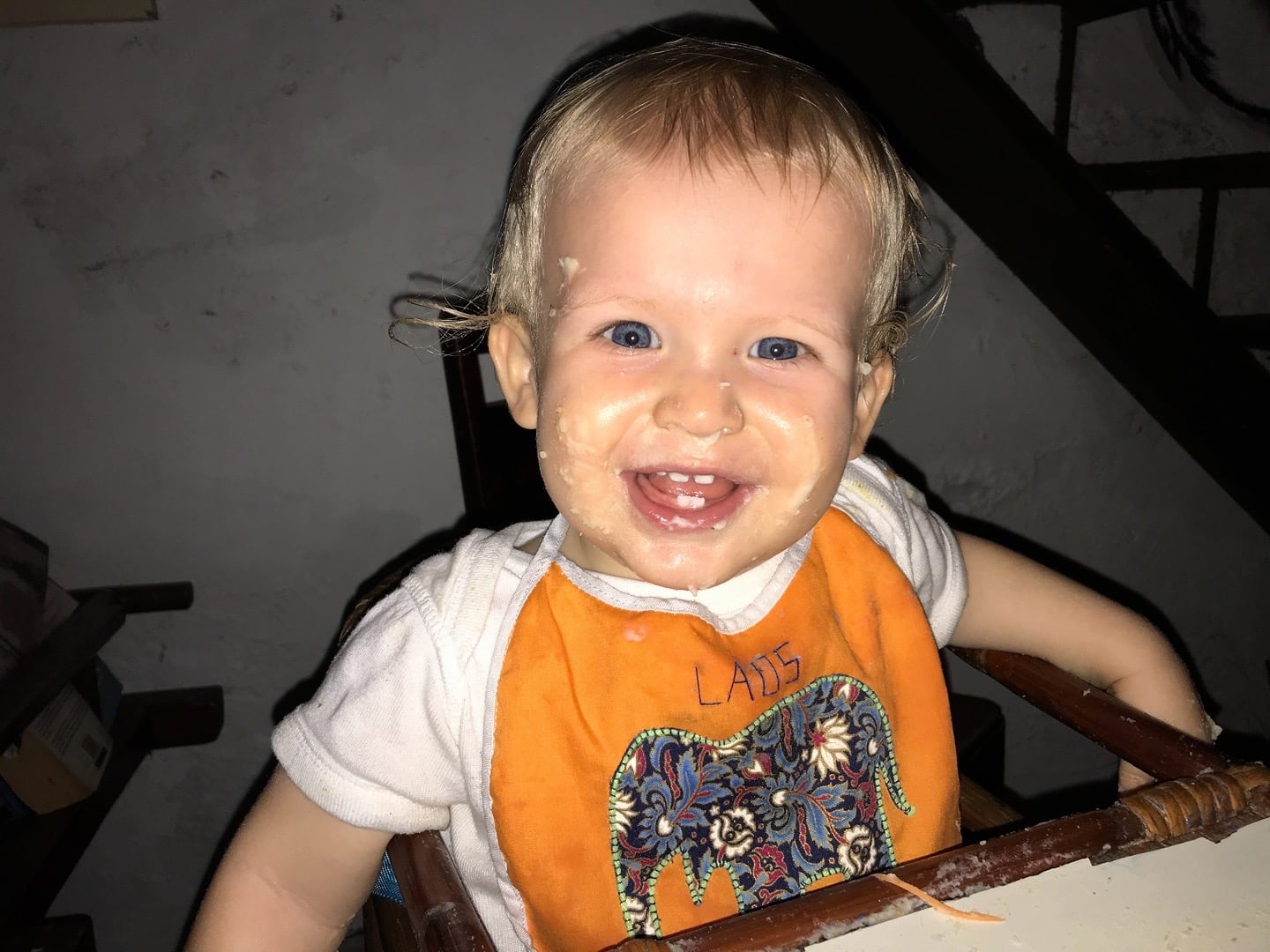
Four nights into our stay in Georgetown, the kids went down easier than expected, so daddy fired up the ol’ NES and took a trip down memory.
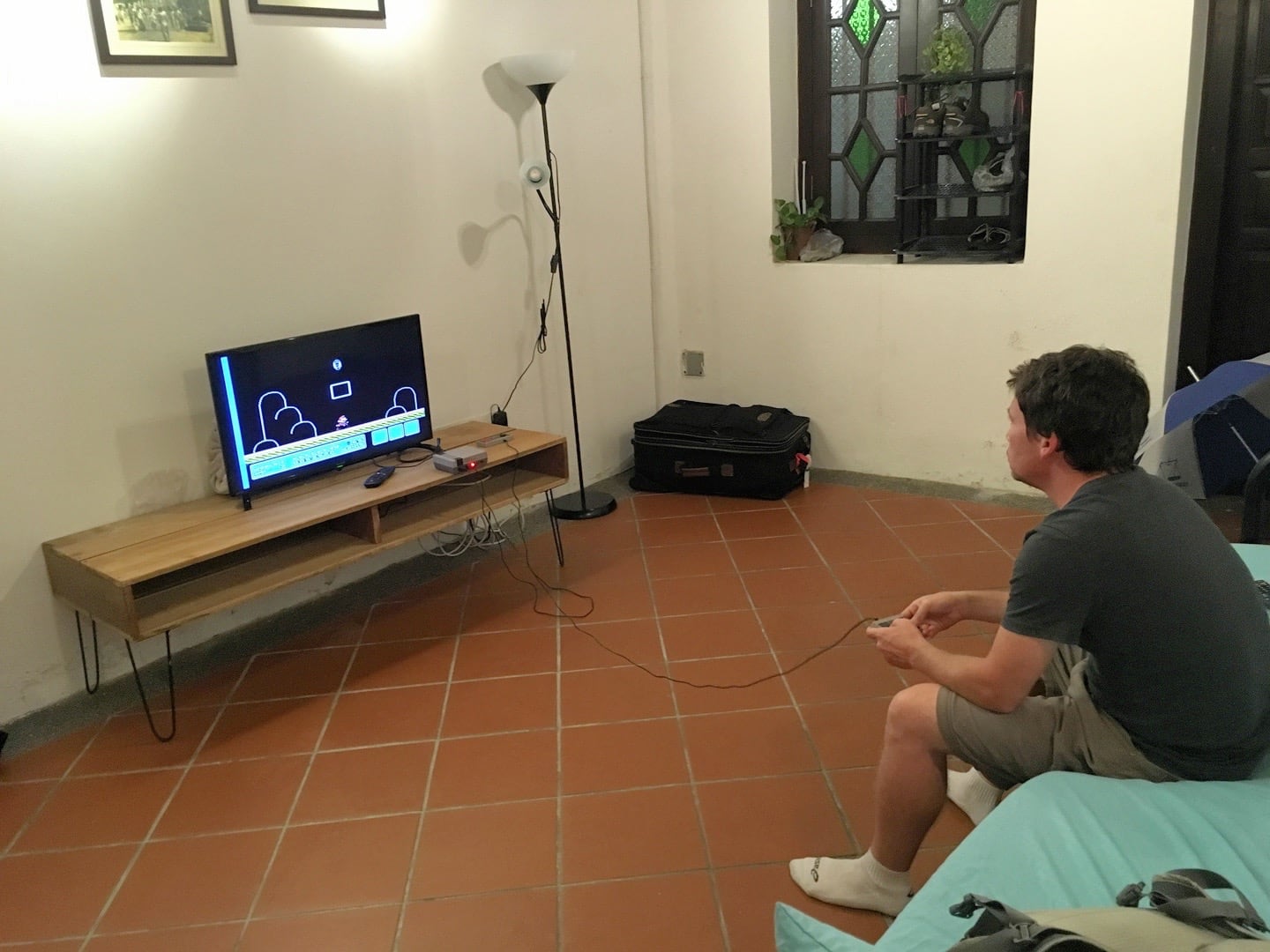
George Town Eats & Drinks: Our Favorites
- China House **Great for Kids**
- Nasi Kandar Line Clear **Cheap & Awesome Malay-Indian**
- Teksen **Where the locals go for quality, authentic Chinese **
- Junk Cafe **acid trip, minus the acid**
- Holy Guacamole **Superb Mexican**
- New Lane Street Foodstalls **THE PLACE for street food in Georgetown**
- Wheeler’s & Urban Daybreak **Excellent Western comfort breakfast**
- Ome by Spacebar Coffee **Possibly the best coffee shop in town (Nitro Cold Brew!)**
- Yin’s Sourdough Bakery **Excellent cheap lunch place for sandwiches**
- Muchachas **Great water view and wine on historic Church St. Pier**
- Original Reggae Club **Quick & tasty Middle Eastern with a funky vibe**
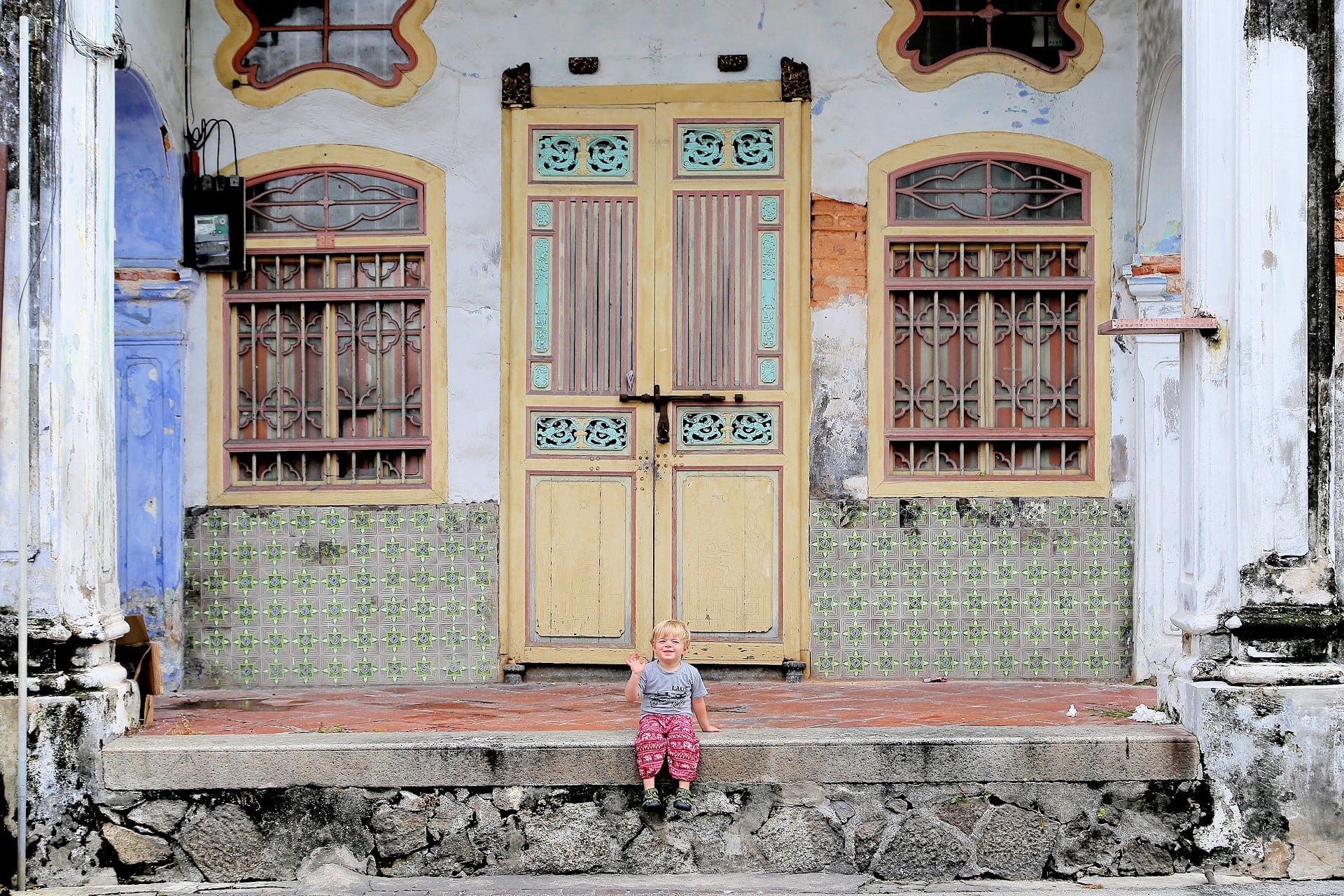
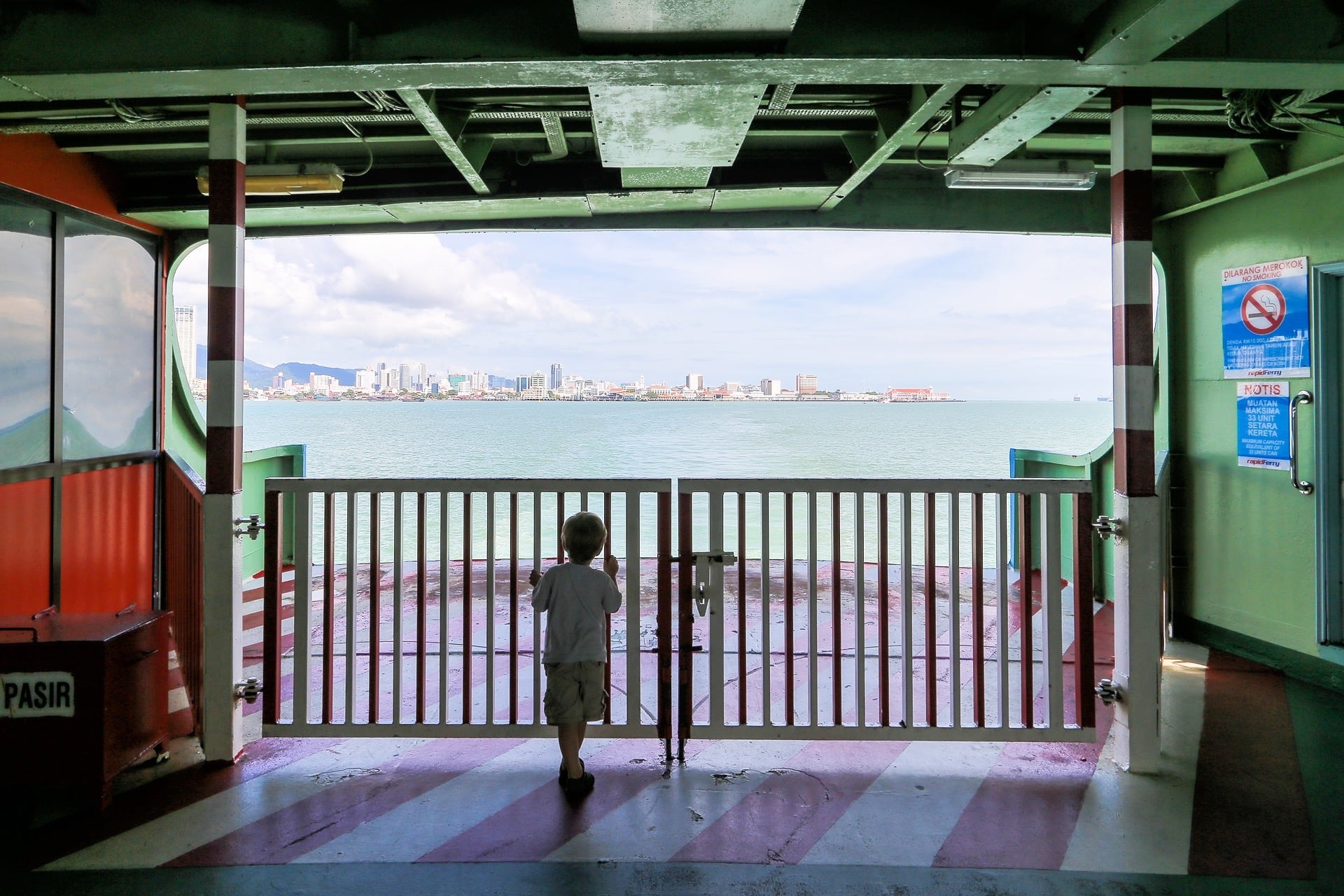
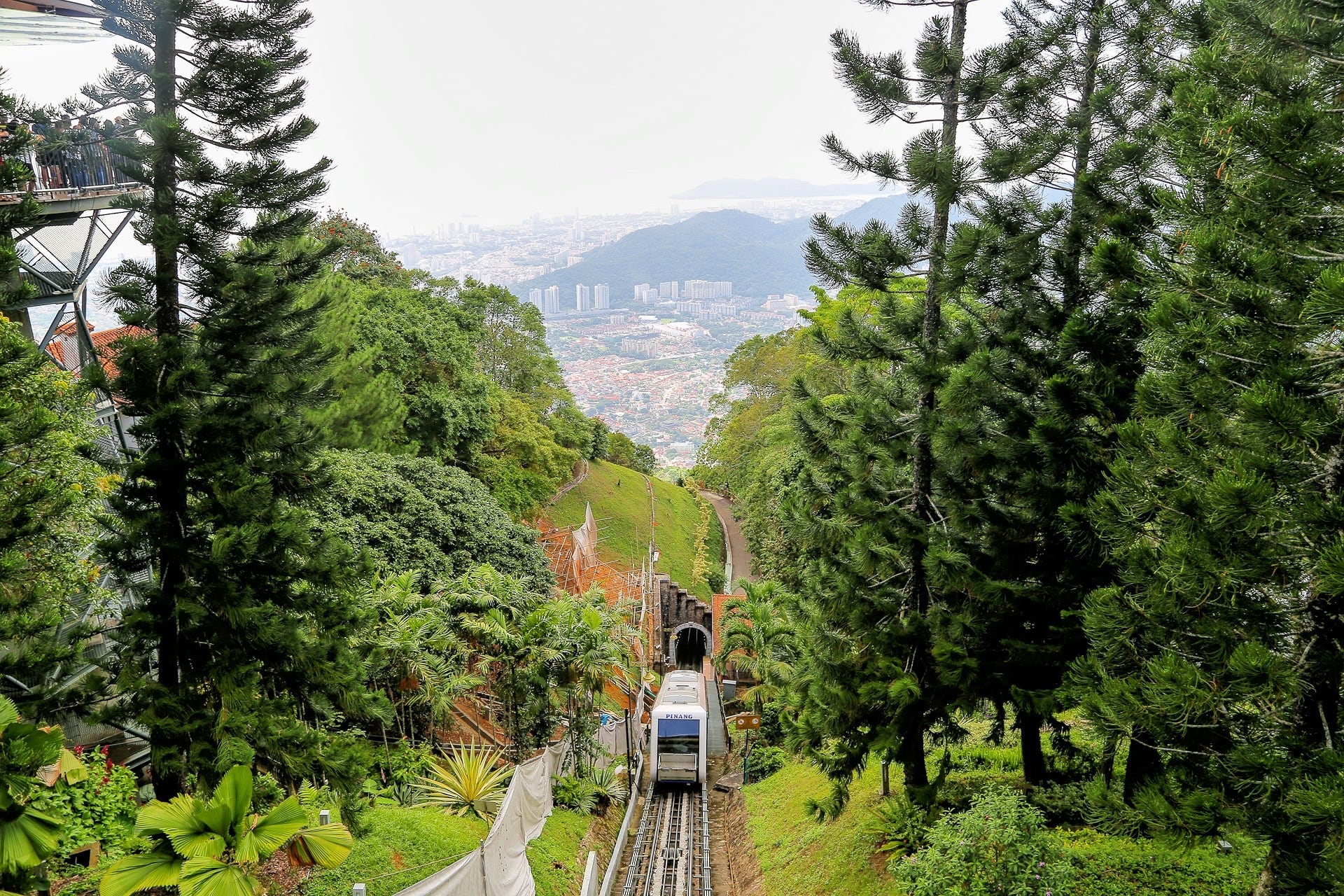
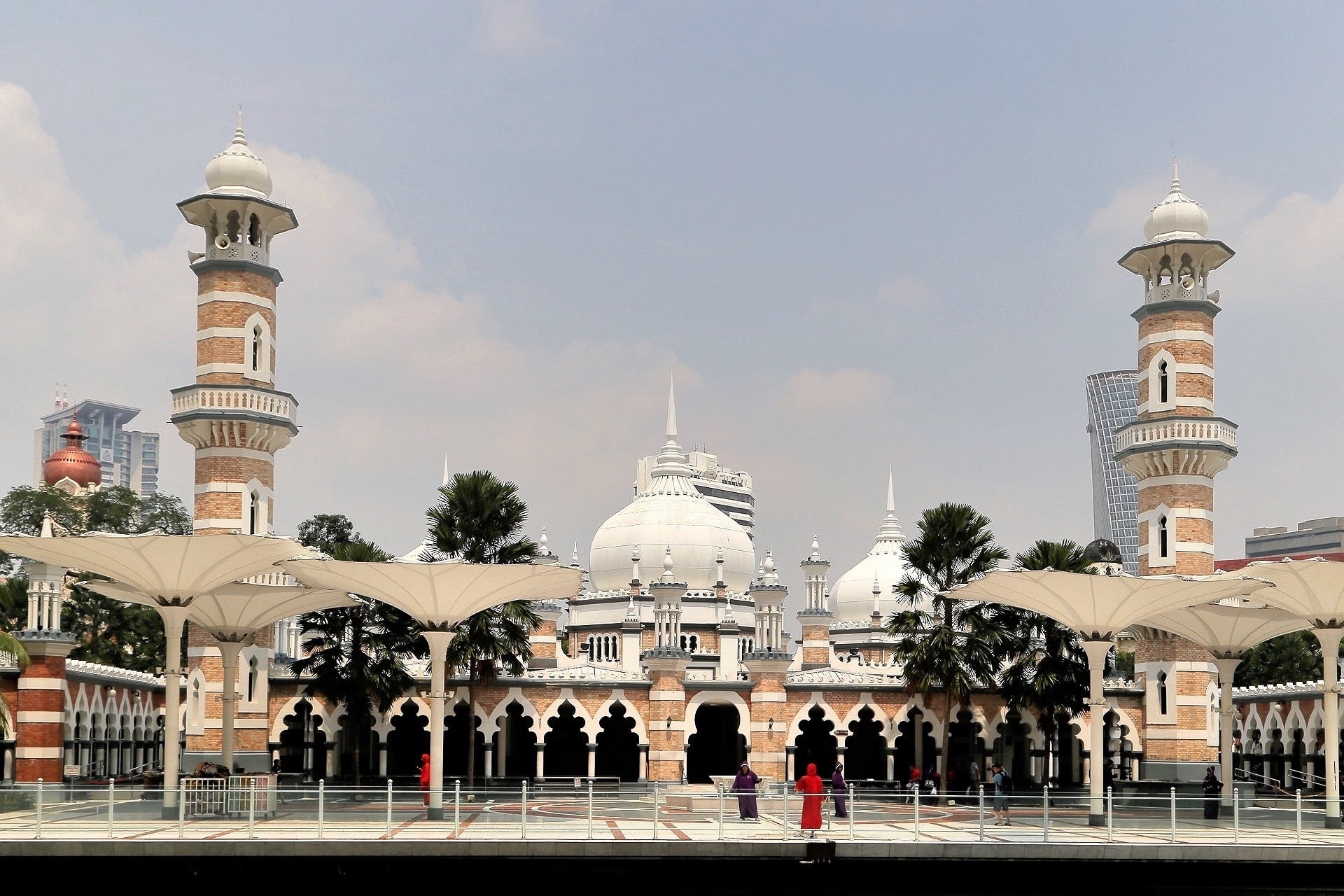
Great review – made me want to visit it even more !
Thanks, Barry. You really should! Georgetown (and Penang) are well worth a visit.
You always find the “funnest” places. We love seeing the pictures and reading about your adventures.
That’s always our aim, of course, but it’s rarely been as easy to find those places as it was in Georgetown.